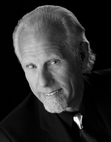Paul Bishop's Blog, page 41
August 31, 2015
BRIGHT LIGHTS AND RUBBER HOSES
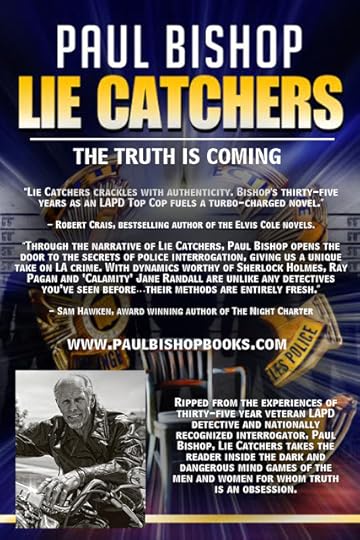 Another tough interrogation...This time Venture Galleries Caleb Pritle is asking the questions from behind the bright lights...
Another tough interrogation...This time Venture Galleries Caleb Pritle is asking the questions from behind the bright lights...BRIGHT LIGHTS ANDRUBBER HOSES VENTURE GALLERIES' CALEB PRITLE INTERROGATES PAUL BISHOP
Paul Bishop is one of our most popular and consistent columnists at Venture Galleries. A number of his previous novels have been serialized on Venture Galleries to popular acclaim. His latest novel, Lie Catchers, has been recently published by Pro Se Productions. Lie Catchers is the first novel in a new series featuring top LAPD interrogators Ray Pagan and Calamity Jane Randall. Paul is a nationally recognized interrogator in his own right, and it’s only fair he take a turn facing the bright lights and rubber hoses…
Lie Catchers is infused with many of your own experiences as an interrogator, but what was the actual inspiration to jump start the series?
As you know, I spent thirty-five years with the LAPD. More than twenty-five of those years were spent investigating sex crimes – fifteen of them running a squad of thirty sex crimes detectives with jurisdiction over twenty-five percent of the city. During that time interrogation became a more and more important part of what we did. By videotaping and critiquing every interrogation we did, it became clear which techniques worked and which didn’t. as a result, our unit consistently had the highest sex crimes clearance rate in the city.
I now teach week-long interrogation classes to experienced detectives at wide variety of law enforcement agencies, including my old stomping ground – the LAPD. Invariably, on Wednesday or Thursday, one of the more experience detectives will approach me because they are angry.
However, the great thing is, they aren’t angry with me. They are angry because they didn’t understand the concepts taught in the class sooner. It is not the cases we crack that matter, it’s the ones we don’t that haunt us.
Having read voraciously in the mystery field as well as writing a number of cop related novels, I realized I’d never come across a novel that dealt with interrogation in a realistic manner. Books don’t get it right. TV certainly doesn’t get it right.
With the knowledge and experience I had with interrogation, I wanted to write a novel that would be as close to what an interrogator does as fiction would allow. Lie Catchers is the result.
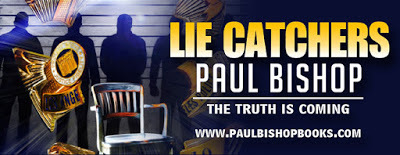
FOR THE FULL INTERVIEW CLICK HERE
Published on August 31, 2015 08:39
August 30, 2015
A LIBRARY ON THE MOVE
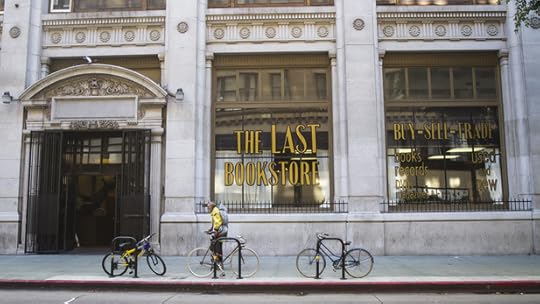 There is a very cool establishment in downtown LA called The Last Bookstore. All of their upstairs warrens of used books are organized first by color and then alphabetically within each color or variation. It looks really great, but it is a royal pain to find those obscure titles collectors search for unless you know the color of the cover. Great for browsing, not so great for finding specific wants.
There is a very cool establishment in downtown LA called The Last Bookstore. All of their upstairs warrens of used books are organized first by color and then alphabetically within each color or variation. It looks really great, but it is a royal pain to find those obscure titles collectors search for unless you know the color of the cover. Great for browsing, not so great for finding specific wants. My own shelves are organized aesthetically. Books appear to be grouped by subject and genre, however, they are really grouped by the emotions I attach to the books. Nobody else could find anything, but if you pushed all thousand-plus titles onto the floor and mixed them up, I would be able to methodically put each one back in its original place. If I was away and you needed to find a specific title, I could call you and tell you the specific shelf and position on the shelf where you could find it. Very OCD (or CDO – which is OCD in the right order), but I have a tremendous attachment to the books I now retain. I once had over three thousand books in the library, including a big collection of signed first editions. That got split in half in one of those life partings which see possessions cut in half with an emotional chainsaw.
My own shelves are organized aesthetically. Books appear to be grouped by subject and genre, however, they are really grouped by the emotions I attach to the books. Nobody else could find anything, but if you pushed all thousand-plus titles onto the floor and mixed them up, I would be able to methodically put each one back in its original place. If I was away and you needed to find a specific title, I could call you and tell you the specific shelf and position on the shelf where you could find it. Very OCD (or CDO – which is OCD in the right order), but I have a tremendous attachment to the books I now retain. I once had over three thousand books in the library, including a big collection of signed first editions. That got split in half in one of those life partings which see possessions cut in half with an emotional chainsaw.
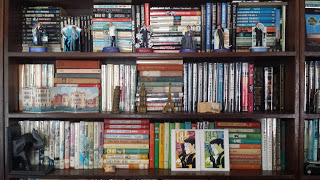 In some ways, losing half of what I considered mylibrary was a big help to me. It delivered a strong blow to my obsessive collector tendencies, and made me think about what it was I really wanted from a personal library. I realized it should not simply be a collection of books without any strong connection to the individual who assemble the tomes on the shelves – it needed to be a living, changing, reflection of the individual collector. As a result, I ended up whittling down my half of the original library to only those books to which I had an emotional connection. I lost all interested in signed first editions, which to be of value must only have a signature without any personalization. I also came to realized as I grew intellectually, matured emotionally, and changed life perspective, my personal library needed to change as well. I realize this perspective will be seen as blasphemy by many, including a number of personal friends whose collections go back to the first books they bought for themselves. To each their own… However, acting on my epiphany has seen the books in my library settle in consistently at around 800 titles, but which have change almost completely three or four times in the past twenty-five years. There is still a core of about 200 books which are permanent entries, but all the rest are fair game to be swapped out for something different.
In some ways, losing half of what I considered mylibrary was a big help to me. It delivered a strong blow to my obsessive collector tendencies, and made me think about what it was I really wanted from a personal library. I realized it should not simply be a collection of books without any strong connection to the individual who assemble the tomes on the shelves – it needed to be a living, changing, reflection of the individual collector. As a result, I ended up whittling down my half of the original library to only those books to which I had an emotional connection. I lost all interested in signed first editions, which to be of value must only have a signature without any personalization. I also came to realized as I grew intellectually, matured emotionally, and changed life perspective, my personal library needed to change as well. I realize this perspective will be seen as blasphemy by many, including a number of personal friends whose collections go back to the first books they bought for themselves. To each their own… However, acting on my epiphany has seen the books in my library settle in consistently at around 800 titles, but which have change almost completely three or four times in the past twenty-five years. There is still a core of about 200 books which are permanent entries, but all the rest are fair game to be swapped out for something different.
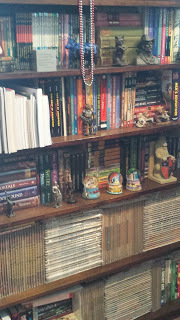 I do not seek signed copies any more unless I have a personal connection to a book or its author – for instance, I have signed copies of all the paperbacks from the Fight Card series I edited…and will always keep. I also have a signed copy of The Razor's Edge with which I will never part because of how the book came into my possession and how much that particular story has affected my life. I have also turned my collection into a readers' library. I prefer books that have been cared for, yet well read. They are not monetarily valuable in the least, but they have a priceless emotional history I can actually feel. I know that sounds wacky, but none-the-less it works for me. There isn't a book on my shelves I haven't read, where as before, when the tomes numbered in the thousands, over half had never been read and were simply sitting on the shelves to fulfill a compulsion.
I do not seek signed copies any more unless I have a personal connection to a book or its author – for instance, I have signed copies of all the paperbacks from the Fight Card series I edited…and will always keep. I also have a signed copy of The Razor's Edge with which I will never part because of how the book came into my possession and how much that particular story has affected my life. I have also turned my collection into a readers' library. I prefer books that have been cared for, yet well read. They are not monetarily valuable in the least, but they have a priceless emotional history I can actually feel. I know that sounds wacky, but none-the-less it works for me. There isn't a book on my shelves I haven't read, where as before, when the tomes numbered in the thousands, over half had never been read and were simply sitting on the shelves to fulfill a compulsion.
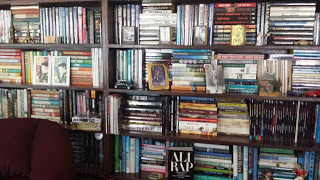 For a number of years now, I felt the current incarnation of my library was pretty static. In reality, it didn't change because I wasn't changing. I needed the stability of the titles I knew and kept there on the shelves waiting and comforting. However, recently, I have started to have an inkling a fairly large number of certain titles were telling me they were expecting to continue their journey from my shelves to elsewhere. In much the same way, I sometimes feel like a well-worn title in a confined collection – pushing myself further and further to the edge of the shelf – caught between fear of freefall and the exhilaration of new experiences. As this time for change approaches, I have been running my fingers down the well-worn spines of friends, recognizing it is okay for them to immigrate to new homes and collections. I also know there are other worn paperbacks and slightly battered hardcovers waiting for me to discover them and take them in… ABOUT THE AUTHOR: Novelist, screenwriter, and television personality, Paul Bishop spent 35 years with the Los Angeles Police Department, where he was twice honored as Detective of the Year. He continues to work privately as a deception expert. His fifteen novels include five in his LAPD Homicide Detective Fey Croaker series. His latest novel, Lie Catchers, begins a new series featuring top LAPD interrogators Ray Pagan and Calamity Jane Randall.
WEBSITE
TWITTER
FACEBOOK
AMAZON
LIE CATCHERS
For a number of years now, I felt the current incarnation of my library was pretty static. In reality, it didn't change because I wasn't changing. I needed the stability of the titles I knew and kept there on the shelves waiting and comforting. However, recently, I have started to have an inkling a fairly large number of certain titles were telling me they were expecting to continue their journey from my shelves to elsewhere. In much the same way, I sometimes feel like a well-worn title in a confined collection – pushing myself further and further to the edge of the shelf – caught between fear of freefall and the exhilaration of new experiences. As this time for change approaches, I have been running my fingers down the well-worn spines of friends, recognizing it is okay for them to immigrate to new homes and collections. I also know there are other worn paperbacks and slightly battered hardcovers waiting for me to discover them and take them in… ABOUT THE AUTHOR: Novelist, screenwriter, and television personality, Paul Bishop spent 35 years with the Los Angeles Police Department, where he was twice honored as Detective of the Year. He continues to work privately as a deception expert. His fifteen novels include five in his LAPD Homicide Detective Fey Croaker series. His latest novel, Lie Catchers, begins a new series featuring top LAPD interrogators Ray Pagan and Calamity Jane Randall.
WEBSITE
TWITTER
FACEBOOK
AMAZON
LIE CATCHERS
Published on August 30, 2015 21:29
BRIAN DRAKE AT LARGE INTERVIEW FEATURING PAUL BISHOP…
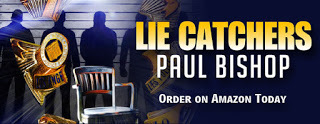 Brian Drake, man about town and author of the STEVE DANE THRILLERS, threw some questions at me for an interview on his blog, BRIAN DRAKE AT LARGE… PAUL BISHOP’S LIE CATCHERS
Brian Drake, man about town and author of the STEVE DANE THRILLERS, threw some questions at me for an interview on his blog, BRIAN DRAKE AT LARGE… PAUL BISHOP’S LIE CATCHERSHere's a good one for those of you tired of the same-old-same with your police stories. Paul Bishop's LIE CATCHERS is a corker of a book, and a big plus are the bonus features. Paul includes two personal essays from his amazing law enforcement career: his first interrogation, and his last. They are terrific insights into what makes cops tick. There's more that I can say about them, but that takes us into spoiler territory. You simply have to read this one for yourself.
I slapped the cuffs on Paul and tossed him into my own holding tank for this interview:
Brian Drake: What inspired Lie Catchers?
Paul Bishop: I was looking for a new twist on an established genre. While pulling my hair out watching an interrogation conducted by real world detectives on an episode of 48 Hours, I realized I’d never come across a novel, movie, or TV show portraying the successful interrogation techniques I’d developed over thirty plus years with the LAPD dealing with uncountable suspects. I now teach interrogation to numerous law enforcement agencies – not just the techniques, but the psychological and physical sciences behind them. Finally, I took the hint my subconscious had been using to batter me and realized I was in a unique position to write an interrogation based novel and make it as realistic as fiction would allow. Lie Catchers is the result.
FOR THE FULL INTERVIEW CLICK HERE
Published on August 30, 2015 20:57
August 28, 2015
EDITORUS REX
 First four words about editors and mentors…They are not God… Now a few more words…Working with editors and mentors (E/Ms) can be confusing and on occasion filled with frustration. I’ve worked with good and bad E/Ms, and – thankfully – one great E/M. Good E/Ms are the most common of the genus éditorus rex. These, generally kind examples of the species, understand what you are trying to accomplish with your novel/story, but only work with you if your manuscript is – short of a copy edit – publication ready. They are pleasant enough, but harried and easily distracted by their own problems or workload. They are like parents who raise free-range children, allowing them to run wild, hoping they will eventually turn out okay. Bad E/Ms are like weeds in the flower beds of your prose. They are noxious, prevalent, and can choke the life out of your manuscript. Sometimes, you can feel as if this species of E/M is reveling in picking your manuscript apart, insisting on changes from left field, and they can leave you having no idea what they are talking about (I did mention frustration above). In general, these sour individuals are simply not a good match for your particular manuscript.
First four words about editors and mentors…They are not God… Now a few more words…Working with editors and mentors (E/Ms) can be confusing and on occasion filled with frustration. I’ve worked with good and bad E/Ms, and – thankfully – one great E/M. Good E/Ms are the most common of the genus éditorus rex. These, generally kind examples of the species, understand what you are trying to accomplish with your novel/story, but only work with you if your manuscript is – short of a copy edit – publication ready. They are pleasant enough, but harried and easily distracted by their own problems or workload. They are like parents who raise free-range children, allowing them to run wild, hoping they will eventually turn out okay. Bad E/Ms are like weeds in the flower beds of your prose. They are noxious, prevalent, and can choke the life out of your manuscript. Sometimes, you can feel as if this species of E/M is reveling in picking your manuscript apart, insisting on changes from left field, and they can leave you having no idea what they are talking about (I did mention frustration above). In general, these sour individuals are simply not a good match for your particular manuscript.
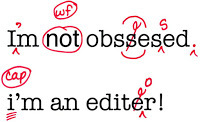 Bad E/Ms may actually be good editors when working in their favorite genre or with important authors– as opposed to working writers. However, when faced with being assigned to edit a manuscript from a genre with which they are not familiar – or simply don’t like – they can become as difficult as a four-year-old having a meltdown in the middle of the cereal aisle. They may even view your manuscript as beneath their own literary aspirations. They believe they should be editing Thomas Wolfe or F. Scott Fitzgerald – you know, authorsworthy of their attention – instead of wasting their time with you. Yikes. If this happens to you escape while you still can. The problem is, beginning writers often confuse the above editorial species. You have to be objective when working with an E/M. Are they helping you make the manuscript better, or are they undermining the power of your words?
Bad E/Ms may actually be good editors when working in their favorite genre or with important authors– as opposed to working writers. However, when faced with being assigned to edit a manuscript from a genre with which they are not familiar – or simply don’t like – they can become as difficult as a four-year-old having a meltdown in the middle of the cereal aisle. They may even view your manuscript as beneath their own literary aspirations. They believe they should be editing Thomas Wolfe or F. Scott Fitzgerald – you know, authorsworthy of their attention – instead of wasting their time with you. Yikes. If this happens to you escape while you still can. The problem is, beginning writers often confuse the above editorial species. You have to be objective when working with an E/M. Are they helping you make the manuscript better, or are they undermining the power of your words?
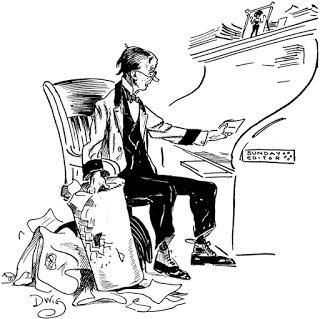 Some beginning writers have a hard time overcoming the blinkers of their own writer’s narcissism. They are like mothers who believe their fat, spotty, rude child – otherwise known as their manuscript – is perfect, and woe be to anyone who doesn’t lavish praise or who dares to change a word. Writer’s like this can’t recognize when the suggestions and changes offered by a good E/M are pertinent and needed. Unable to distinguish between the bright plumage of a good E/M and the black belly feathers of a Bad E/M, they rant and rave and become their own worst enemy. Unless they really are the equivalent of Thomas Wolfe or F. Scott Fitzgerald, they will not find the welcome mat out next time they want to submit a manuscript. There is another breed of beginning writer at the other end of the spectrum. They can’t imagine ever disagreeing with an editor. They often end up butchering their fragile bonsai tree of a manuscript trying to please an E/M who may (good E/Ms) or may not (bad E/Ms) have the best interest of their manuscript at heart. Great E/Ms are rare and magical beasts. They are actually able to see what works and doesn’t work in your novel. They make considered and constructive suggestions, help you find solutions to manuscript problems, encourage you through the hard process of making changes, and become a true partner in the publishing process. If you ever come across a great E/M, protect them with your life. They will make you a better writer and a better person. They might not turn your manuscript into a bestseller, but they will ensure it will sell better than it would without their input. But let’s get back to the point of this diatribe – E/Ms are not God. As a writer, I’ve long believed the myth that most E/Ms are trolls living under their desks snatching at any winsome manuscript trying to pass across their desk. I am loath to give up that unreasonable impression, even though I now find myself turning into a troll as my role of E/M expands. Remember, an E/M’s comments on your manuscript are opinions. We may be wrong (but probably not). Comments on your manuscript are not judgements of you as a person or even as a writer. I wrote a lot of bad crap before the scent of my pros began to become more acceptably aromatic. Speaking for myself I am completely capable of getting things wrong. If you send me a historical romance to edit, my tendency would be to strip down your flowing prose, excise all of the yucky moony-eyed stuff, and editing you by the standards of another genre with which I am more familiar. Hopefully, I have evolved as an E/M to the point where I don’t do this. I have grown to understand the tropes of many other genres beyond my own. I could be a good editor for a historical romance or sweet romance or even an erotic romance – but I will never be a great editor in those genres because I have nothing to add to make a manuscript better other than the generic literary conventions. I could make such a manuscript better, but I most likely couldn’t help make it sing.
Some beginning writers have a hard time overcoming the blinkers of their own writer’s narcissism. They are like mothers who believe their fat, spotty, rude child – otherwise known as their manuscript – is perfect, and woe be to anyone who doesn’t lavish praise or who dares to change a word. Writer’s like this can’t recognize when the suggestions and changes offered by a good E/M are pertinent and needed. Unable to distinguish between the bright plumage of a good E/M and the black belly feathers of a Bad E/M, they rant and rave and become their own worst enemy. Unless they really are the equivalent of Thomas Wolfe or F. Scott Fitzgerald, they will not find the welcome mat out next time they want to submit a manuscript. There is another breed of beginning writer at the other end of the spectrum. They can’t imagine ever disagreeing with an editor. They often end up butchering their fragile bonsai tree of a manuscript trying to please an E/M who may (good E/Ms) or may not (bad E/Ms) have the best interest of their manuscript at heart. Great E/Ms are rare and magical beasts. They are actually able to see what works and doesn’t work in your novel. They make considered and constructive suggestions, help you find solutions to manuscript problems, encourage you through the hard process of making changes, and become a true partner in the publishing process. If you ever come across a great E/M, protect them with your life. They will make you a better writer and a better person. They might not turn your manuscript into a bestseller, but they will ensure it will sell better than it would without their input. But let’s get back to the point of this diatribe – E/Ms are not God. As a writer, I’ve long believed the myth that most E/Ms are trolls living under their desks snatching at any winsome manuscript trying to pass across their desk. I am loath to give up that unreasonable impression, even though I now find myself turning into a troll as my role of E/M expands. Remember, an E/M’s comments on your manuscript are opinions. We may be wrong (but probably not). Comments on your manuscript are not judgements of you as a person or even as a writer. I wrote a lot of bad crap before the scent of my pros began to become more acceptably aromatic. Speaking for myself I am completely capable of getting things wrong. If you send me a historical romance to edit, my tendency would be to strip down your flowing prose, excise all of the yucky moony-eyed stuff, and editing you by the standards of another genre with which I am more familiar. Hopefully, I have evolved as an E/M to the point where I don’t do this. I have grown to understand the tropes of many other genres beyond my own. I could be a good editor for a historical romance or sweet romance or even an erotic romance – but I will never be a great editor in those genres because I have nothing to add to make a manuscript better other than the generic literary conventions. I could make such a manuscript better, but I most likely couldn’t help make it sing.
 So, what does all of this mean when you submit a manuscript or work with an E/M? First, when your chosen E/M makes comments and suggestions don’t take them personally. Try to be objective about them. Do they make sense? Do they make your manuscript stronger? Don’t be obnoxious, but neither be afraid to disagree. I personally am open to a back and forth literary relationship. I may not get what you are trying to do until you explain it to me. Once I understand, I can tailor my advice and encouragement. I am certainly not the final word on the worth of a manuscript or even the changes I think should be made. No E/M is. This is about your writing, not a troll’s editing. Still, as a writer, you need to be open and prepared to learn from an E/M’s experience, while not allowing an E/M to derail your vision. ONE FINAL NOTE: E/M shopping can be a dangerous path. After offering advice, no E/M likes to be told be told, “But that’s the complete opposite of what E/M so-and-so said.” E/M shopping will only lead you to a cornucopia of conflicting advice, causing utter confusion and frustration for a beginning writer. An E/M offers advice and opinions. Throwing up your arms and telling an E/M another E/M gave the total opposite advice is the quickest way to make the current E/M abandon you in midstream. If an E/M’s advice is conflicting with what you’ve been told, keep your own counsel, consider the advice, and make a decision about which E/M is right. Then – most importantly – stop shopping around and stick with the E/M who serves you best.
So, what does all of this mean when you submit a manuscript or work with an E/M? First, when your chosen E/M makes comments and suggestions don’t take them personally. Try to be objective about them. Do they make sense? Do they make your manuscript stronger? Don’t be obnoxious, but neither be afraid to disagree. I personally am open to a back and forth literary relationship. I may not get what you are trying to do until you explain it to me. Once I understand, I can tailor my advice and encouragement. I am certainly not the final word on the worth of a manuscript or even the changes I think should be made. No E/M is. This is about your writing, not a troll’s editing. Still, as a writer, you need to be open and prepared to learn from an E/M’s experience, while not allowing an E/M to derail your vision. ONE FINAL NOTE: E/M shopping can be a dangerous path. After offering advice, no E/M likes to be told be told, “But that’s the complete opposite of what E/M so-and-so said.” E/M shopping will only lead you to a cornucopia of conflicting advice, causing utter confusion and frustration for a beginning writer. An E/M offers advice and opinions. Throwing up your arms and telling an E/M another E/M gave the total opposite advice is the quickest way to make the current E/M abandon you in midstream. If an E/M’s advice is conflicting with what you’ve been told, keep your own counsel, consider the advice, and make a decision about which E/M is right. Then – most importantly – stop shopping around and stick with the E/M who serves you best.
ABOUT THE AUTHOR: Novelist, screenwriter, and television personality, Paul Bishop spent 35 years with the Los Angeles Police Department, where he was twice honored as Detective of the Year. He continues to work privately as a deception expert. His fifteen novels include five in his LAPD Homicide Detective Fey Croaker series. His latest novel, Lie Catchers, begins a new series featuring top LAPD interrogators Ray Pagan and Calamity Jane Randall. WEBSITE TWITTER FACEBOOK AMAZON
 First four words about editors and mentors…They are not God… Now a few more words…Working with editors and mentors (E/Ms) can be confusing and on occasion filled with frustration. I’ve worked with good and bad E/Ms, and – thankfully – one great E/M. Good E/Ms are the most common of the genus éditorus rex. These, generally kind examples of the species, understand what you are trying to accomplish with your novel/story, but only work with you if your manuscript is – short of a copy edit – publication ready. They are pleasant enough, but harried and easily distracted by their own problems or workload. They are like parents who raise free-range children, allowing them to run wild, hoping they will eventually turn out okay. Bad E/Ms are like weeds in the flower beds of your prose. They are noxious, prevalent, and can choke the life out of your manuscript. Sometimes, you can feel as if this species of E/M is reveling in picking your manuscript apart, insisting on changes from left field, and they can leave you having no idea what they are talking about (I did mention frustration above). In general, these sour individuals are simply not a good match for your particular manuscript.
First four words about editors and mentors…They are not God… Now a few more words…Working with editors and mentors (E/Ms) can be confusing and on occasion filled with frustration. I’ve worked with good and bad E/Ms, and – thankfully – one great E/M. Good E/Ms are the most common of the genus éditorus rex. These, generally kind examples of the species, understand what you are trying to accomplish with your novel/story, but only work with you if your manuscript is – short of a copy edit – publication ready. They are pleasant enough, but harried and easily distracted by their own problems or workload. They are like parents who raise free-range children, allowing them to run wild, hoping they will eventually turn out okay. Bad E/Ms are like weeds in the flower beds of your prose. They are noxious, prevalent, and can choke the life out of your manuscript. Sometimes, you can feel as if this species of E/M is reveling in picking your manuscript apart, insisting on changes from left field, and they can leave you having no idea what they are talking about (I did mention frustration above). In general, these sour individuals are simply not a good match for your particular manuscript.
 Bad E/Ms may actually be good editors when working in their favorite genre or with important authors– as opposed to working writers. However, when faced with being assigned to edit a manuscript from a genre with which they are not familiar – or simply don’t like – they can become as difficult as a four-year-old having a meltdown in the middle of the cereal aisle. They may even view your manuscript as beneath their own literary aspirations. They believe they should be editing Thomas Wolfe or F. Scott Fitzgerald – you know, authorsworthy of their attention – instead of wasting their time with you. Yikes. If this happens to you escape while you still can. The problem is, beginning writers often confuse the above editorial species. You have to be objective when working with an E/M. Are they helping you make the manuscript better, or are they undermining the power of your words?
Bad E/Ms may actually be good editors when working in their favorite genre or with important authors– as opposed to working writers. However, when faced with being assigned to edit a manuscript from a genre with which they are not familiar – or simply don’t like – they can become as difficult as a four-year-old having a meltdown in the middle of the cereal aisle. They may even view your manuscript as beneath their own literary aspirations. They believe they should be editing Thomas Wolfe or F. Scott Fitzgerald – you know, authorsworthy of their attention – instead of wasting their time with you. Yikes. If this happens to you escape while you still can. The problem is, beginning writers often confuse the above editorial species. You have to be objective when working with an E/M. Are they helping you make the manuscript better, or are they undermining the power of your words?
 Some beginning writers have a hard time overcoming the blinkers of their own writer’s narcissism. They are like mothers who believe their fat, spotty, rude child – otherwise known as their manuscript – is perfect, and woe be to anyone who doesn’t lavish praise or who dares to change a word. Writer’s like this can’t recognize when the suggestions and changes offered by a good E/M are pertinent and needed. Unable to distinguish between the bright plumage of a good E/M and the black belly feathers of a Bad E/M, they rant and rave and become their own worst enemy. Unless they really are the equivalent of Thomas Wolfe or F. Scott Fitzgerald, they will not find the welcome mat out next time they want to submit a manuscript. There is another breed of beginning writer at the other end of the spectrum. They can’t imagine ever disagreeing with an editor. They often end up butchering their fragile bonsai tree of a manuscript trying to please an E/M who may (good E/Ms) or may not (bad E/Ms) have the best interest of their manuscript at heart. Great E/Ms are rare and magical beasts. They are actually able to see what works and doesn’t work in your novel. They make considered and constructive suggestions, help you find solutions to manuscript problems, encourage you through the hard process of making changes, and become a true partner in the publishing process. If you ever come across a great E/M, protect them with your life. They will make you a better writer and a better person. They might not turn your manuscript into a bestseller, but they will ensure it will sell better than it would without their input. But let’s get back to the point of this diatribe – E/Ms are not God. As a writer, I’ve long believed the myth that most E/Ms are trolls living under their desks snatching at any winsome manuscript trying to pass across their desk. I am loath to give up that unreasonable impression, even though I now find myself turning into a troll as my role of E/M expands. Remember, an E/M’s comments on your manuscript are opinions. We may be wrong (but probably not). Comments on your manuscript are not judgements of you as a person or even as a writer. I wrote a lot of bad crap before the scent of my pros began to become more acceptably aromatic. Speaking for myself I am completely capable of getting things wrong. If you send me a historical romance to edit, my tendency would be to strip down your flowing prose, excise all of the yucky moony-eyed stuff, and editing you by the standards of another genre with which I am more familiar. Hopefully, I have evolved as an E/M to the point where I don’t do this. I have grown to understand the tropes of many other genres beyond my own. I could be a good editor for a historical romance or sweet romance or even an erotic romance – but I will never be a great editor in those genres because I have nothing to add to make a manuscript better other than the generic literary conventions. I could make such a manuscript better, but I most likely couldn’t help make it sing.
Some beginning writers have a hard time overcoming the blinkers of their own writer’s narcissism. They are like mothers who believe their fat, spotty, rude child – otherwise known as their manuscript – is perfect, and woe be to anyone who doesn’t lavish praise or who dares to change a word. Writer’s like this can’t recognize when the suggestions and changes offered by a good E/M are pertinent and needed. Unable to distinguish between the bright plumage of a good E/M and the black belly feathers of a Bad E/M, they rant and rave and become their own worst enemy. Unless they really are the equivalent of Thomas Wolfe or F. Scott Fitzgerald, they will not find the welcome mat out next time they want to submit a manuscript. There is another breed of beginning writer at the other end of the spectrum. They can’t imagine ever disagreeing with an editor. They often end up butchering their fragile bonsai tree of a manuscript trying to please an E/M who may (good E/Ms) or may not (bad E/Ms) have the best interest of their manuscript at heart. Great E/Ms are rare and magical beasts. They are actually able to see what works and doesn’t work in your novel. They make considered and constructive suggestions, help you find solutions to manuscript problems, encourage you through the hard process of making changes, and become a true partner in the publishing process. If you ever come across a great E/M, protect them with your life. They will make you a better writer and a better person. They might not turn your manuscript into a bestseller, but they will ensure it will sell better than it would without their input. But let’s get back to the point of this diatribe – E/Ms are not God. As a writer, I’ve long believed the myth that most E/Ms are trolls living under their desks snatching at any winsome manuscript trying to pass across their desk. I am loath to give up that unreasonable impression, even though I now find myself turning into a troll as my role of E/M expands. Remember, an E/M’s comments on your manuscript are opinions. We may be wrong (but probably not). Comments on your manuscript are not judgements of you as a person or even as a writer. I wrote a lot of bad crap before the scent of my pros began to become more acceptably aromatic. Speaking for myself I am completely capable of getting things wrong. If you send me a historical romance to edit, my tendency would be to strip down your flowing prose, excise all of the yucky moony-eyed stuff, and editing you by the standards of another genre with which I am more familiar. Hopefully, I have evolved as an E/M to the point where I don’t do this. I have grown to understand the tropes of many other genres beyond my own. I could be a good editor for a historical romance or sweet romance or even an erotic romance – but I will never be a great editor in those genres because I have nothing to add to make a manuscript better other than the generic literary conventions. I could make such a manuscript better, but I most likely couldn’t help make it sing.
 So, what does all of this mean when you submit a manuscript or work with an E/M? First, when your chosen E/M makes comments and suggestions don’t take them personally. Try to be objective about them. Do they make sense? Do they make your manuscript stronger? Don’t be obnoxious, but neither be afraid to disagree. I personally am open to a back and forth literary relationship. I may not get what you are trying to do until you explain it to me. Once I understand, I can tailor my advice and encouragement. I am certainly not the final word on the worth of a manuscript or even the changes I think should be made. No E/M is. This is about your writing, not a troll’s editing. Still, as a writer, you need to be open and prepared to learn from an E/M’s experience, while not allowing an E/M to derail your vision. ONE FINAL NOTE: E/M shopping can be a dangerous path. After offering advice, no E/M likes to be told be told, “But that’s the complete opposite of what E/M so-and-so said.” E/M shopping will only lead you to a cornucopia of conflicting advice, causing utter confusion and frustration for a beginning writer. An E/M offers advice and opinions. Throwing up your arms and telling an E/M another E/M gave the total opposite advice is the quickest way to make the current E/M abandon you in midstream. If an E/M’s advice is conflicting with what you’ve been told, keep your own counsel, consider the advice, and make a decision about which E/M is right. Then – most importantly – stop shopping around and stick with the E/M who serves you best.
So, what does all of this mean when you submit a manuscript or work with an E/M? First, when your chosen E/M makes comments and suggestions don’t take them personally. Try to be objective about them. Do they make sense? Do they make your manuscript stronger? Don’t be obnoxious, but neither be afraid to disagree. I personally am open to a back and forth literary relationship. I may not get what you are trying to do until you explain it to me. Once I understand, I can tailor my advice and encouragement. I am certainly not the final word on the worth of a manuscript or even the changes I think should be made. No E/M is. This is about your writing, not a troll’s editing. Still, as a writer, you need to be open and prepared to learn from an E/M’s experience, while not allowing an E/M to derail your vision. ONE FINAL NOTE: E/M shopping can be a dangerous path. After offering advice, no E/M likes to be told be told, “But that’s the complete opposite of what E/M so-and-so said.” E/M shopping will only lead you to a cornucopia of conflicting advice, causing utter confusion and frustration for a beginning writer. An E/M offers advice and opinions. Throwing up your arms and telling an E/M another E/M gave the total opposite advice is the quickest way to make the current E/M abandon you in midstream. If an E/M’s advice is conflicting with what you’ve been told, keep your own counsel, consider the advice, and make a decision about which E/M is right. Then – most importantly – stop shopping around and stick with the E/M who serves you best. ABOUT THE AUTHOR: Novelist, screenwriter, and television personality, Paul Bishop spent 35 years with the Los Angeles Police Department, where he was twice honored as Detective of the Year. He continues to work privately as a deception expert. His fifteen novels include five in his LAPD Homicide Detective Fey Croaker series. His latest novel, Lie Catchers, begins a new series featuring top LAPD interrogators Ray Pagan and Calamity Jane Randall. WEBSITE TWITTER FACEBOOK AMAZON
Published on August 28, 2015 09:50
SPECIES OF EDITORS AND MENTORS
 First four words about editors and mentors…They are not God… Now a few more words…Working with editors and mentors (E/Ms) can be confusing and on occasion filled with frustration. I’ve worked with good and bad E/Ms, and – thankfully – one great E/M. Good E/Ms are the most common of the genus éditeur. These, generally kind examples of the species, understand what you are trying to accomplish with your novel/story, but only work with you if your manuscript is – short of a copy edit – publication ready. They are pleasant enough, but harried and easily distracted by their own problems or workload. They are like parents who raise free-range children, allowing them to run wild, hoping they will eventually turn out okay. Bad E/Ms are like weeds in the flower beds of your prose. They are noxious, prevalent, and can choke the life out of your manuscript. Sometimes, you can feel as if this species of E/M is reveling in picking your manuscript apart, insisting on changes from left field, and they can leave you having no idea what they are talking about (I did mention frustration above). In general, these sour individuals are simply not a good match for your particular manuscript.
First four words about editors and mentors…They are not God… Now a few more words…Working with editors and mentors (E/Ms) can be confusing and on occasion filled with frustration. I’ve worked with good and bad E/Ms, and – thankfully – one great E/M. Good E/Ms are the most common of the genus éditeur. These, generally kind examples of the species, understand what you are trying to accomplish with your novel/story, but only work with you if your manuscript is – short of a copy edit – publication ready. They are pleasant enough, but harried and easily distracted by their own problems or workload. They are like parents who raise free-range children, allowing them to run wild, hoping they will eventually turn out okay. Bad E/Ms are like weeds in the flower beds of your prose. They are noxious, prevalent, and can choke the life out of your manuscript. Sometimes, you can feel as if this species of E/M is reveling in picking your manuscript apart, insisting on changes from left field, and they can leave you having no idea what they are talking about (I did mention frustration above). In general, these sour individuals are simply not a good match for your particular manuscript.
 Bad E/Ms may actually be good editors when working in their favorite genre or with important authors– as opposed to working writers. However, when faced with being assigned to edit a manuscript from a genre with which they are not familiar – or simply don’t like – they can become as difficult as a four-year-old having a meltdown in the middle of the cereal aisle. They may even view your manuscript as beneath their own literary aspirations. They believe they should be editing Thomas Wolfe or F. Scott Fitzgerald – you know, authorsworthy of their attention – instead of wasting their time with you. Yikes. If this happens to you escape while you still can. The problem is, beginning writers often confuse the above editorial species. You have to be objective when working with an E/M. Are they helping you make the manuscript better, or are they undermining the power of your words?
Bad E/Ms may actually be good editors when working in their favorite genre or with important authors– as opposed to working writers. However, when faced with being assigned to edit a manuscript from a genre with which they are not familiar – or simply don’t like – they can become as difficult as a four-year-old having a meltdown in the middle of the cereal aisle. They may even view your manuscript as beneath their own literary aspirations. They believe they should be editing Thomas Wolfe or F. Scott Fitzgerald – you know, authorsworthy of their attention – instead of wasting their time with you. Yikes. If this happens to you escape while you still can. The problem is, beginning writers often confuse the above editorial species. You have to be objective when working with an E/M. Are they helping you make the manuscript better, or are they undermining the power of your words?
 Some beginning writers have a hard time overcoming the blinkers of their own writer’s narcissism. They are like mothers who believe their fat, spotty, rude child – otherwise known as their manuscript – is perfect, and woe be to anyone who doesn’t lavish praise or who dares to change a word. Writer’s like this can’t recognize when the suggestions and changes offered by a good E/M are pertinent and needed. Unable to distinguish between the bright plumage of a good E/M and the black belly feathers of a Bad E/M, they rant and rave and become their own worst enemy. Unless they really are the equivalent of Thomas Wolfe or F. Scott Fitzgerald, they will not find the welcome mat out next time they want to submit a manuscript. There is another breed of beginning writer at the other end of the spectrum. They can’t imagine ever disagreeing with an editor. They often end up butchering their fragile bonsai tree of a manuscript trying to please an E/M who may (good E/Ms) or may not (bad E/Ms) have the best interest of their manuscript at heart. Great E/Ms are rare and magical beasts. They are actually able to see what works and doesn’t work in your novel. They make considered and constructive suggestions, help you find solutions to manuscript problems, encourage you through the hard process of making changes, and become a true partner in the publishing process. If you ever come across a great E/M, protect them with your life. They will make you a better writer and a better person. They might not turn your manuscript into a bestseller, but they will ensure it will sell better than it would without their input. But let’s get back to the point of this diatribe – E/Ms are not God. As a writer, I’ve long believed the myth that most E/Ms are trolls living under their desks snatching at any winsome manuscript trying to pass across their desk. I am loath to give up that unreasonable impression, even though I now find myself turning into a troll as my role of E/M expands. Remember, an E/M’s comments on your manuscript are opinions. We may be wrong (but probably not). Comments on your manuscript are not judgements of you as a person or even as a writer. I wrote a lot of bad crap before the scent of my pros began to become more acceptably aromatic. Speaking for myself I am completely capable of getting things wrong. If you send me a historical romance to edit, my tendency would be to strip down your flowing prose, excise all of the yucky moony-eyed stuff, and editing you by the standards of another genre with which I am more familiar. Hopefully, I have evolved as an E/M to the point where I don’t do this. I have grown to understand the tropes of many other genres beyond my own. I could be a good editor for a historical romance or sweet romance or even an erotic romance – but I will never be a great editor in those genres because I have nothing to add to make a manuscript better other than the generic literary conventions. I could make such a manuscript better, but I most likely couldn’t help make it sing.
Some beginning writers have a hard time overcoming the blinkers of their own writer’s narcissism. They are like mothers who believe their fat, spotty, rude child – otherwise known as their manuscript – is perfect, and woe be to anyone who doesn’t lavish praise or who dares to change a word. Writer’s like this can’t recognize when the suggestions and changes offered by a good E/M are pertinent and needed. Unable to distinguish between the bright plumage of a good E/M and the black belly feathers of a Bad E/M, they rant and rave and become their own worst enemy. Unless they really are the equivalent of Thomas Wolfe or F. Scott Fitzgerald, they will not find the welcome mat out next time they want to submit a manuscript. There is another breed of beginning writer at the other end of the spectrum. They can’t imagine ever disagreeing with an editor. They often end up butchering their fragile bonsai tree of a manuscript trying to please an E/M who may (good E/Ms) or may not (bad E/Ms) have the best interest of their manuscript at heart. Great E/Ms are rare and magical beasts. They are actually able to see what works and doesn’t work in your novel. They make considered and constructive suggestions, help you find solutions to manuscript problems, encourage you through the hard process of making changes, and become a true partner in the publishing process. If you ever come across a great E/M, protect them with your life. They will make you a better writer and a better person. They might not turn your manuscript into a bestseller, but they will ensure it will sell better than it would without their input. But let’s get back to the point of this diatribe – E/Ms are not God. As a writer, I’ve long believed the myth that most E/Ms are trolls living under their desks snatching at any winsome manuscript trying to pass across their desk. I am loath to give up that unreasonable impression, even though I now find myself turning into a troll as my role of E/M expands. Remember, an E/M’s comments on your manuscript are opinions. We may be wrong (but probably not). Comments on your manuscript are not judgements of you as a person or even as a writer. I wrote a lot of bad crap before the scent of my pros began to become more acceptably aromatic. Speaking for myself I am completely capable of getting things wrong. If you send me a historical romance to edit, my tendency would be to strip down your flowing prose, excise all of the yucky moony-eyed stuff, and editing you by the standards of another genre with which I am more familiar. Hopefully, I have evolved as an E/M to the point where I don’t do this. I have grown to understand the tropes of many other genres beyond my own. I could be a good editor for a historical romance or sweet romance or even an erotic romance – but I will never be a great editor in those genres because I have nothing to add to make a manuscript better other than the generic literary conventions. I could make such a manuscript better, but I most likely couldn’t help make it sing.
 So, what does all of this mean when you submit a manuscript or work with an E/M? First, when your chosen E/M makes comments and suggestions don’t take them personally. Try to be objective about them. Do they make sense? Do they make your manuscript stronger? Don’t be obnoxious, but neither be afraid to disagree. I personally am open to a back and forth literary relationship. I may not get what you are trying to do until you explain it to me. Once I understand, I can tailor my advice and encouragement. I am certainly not the final word on the worth of a manuscript or even the changes I think should be made. No E/M is. This is about your writing, not a troll’s editing. Still, as a writer, you need to be open and prepared to learn from an E/M’s experience, while not allowing an E/M to derail your vision. ONE FINAL NOTE: E/M shopping can be a dangerous path. After offering advice, no E/M likes to be told be told, “But that’s the complete opposite of what E/M so-and-so said.” E/M shopping will only lead you to a cornucopia of conflicting advice, causing utter confusion and frustration for a beginning writer. An E/M offers advice and opinions. Throwing up your arms and telling an E/M another E/M gave the total opposite advice is the quickest way to make the current E/M abandon you in midstream. If an E/M’s advice is conflicting with what you’ve been told, keep your own counsel, consider the advice, and make a decision about which E/M is right. Then – most importantly – stop shopping around and stick with the E/M who serves you best. ABOUT THE AUTHOR: Novelist, screenwriter, and television personality, Paul Bishop spent 35 years with the Los Angeles Police Department, where he was twice honored as Detective of the Year. He continues to work privately as a deception expert. His fifteen novels include five in his LAPD Homicide Detective Fey Croaker series. His latest novel, Lie Catchers, begins a new series featuring top LAPD interrogators Ray Pagan and Calamity Jane Randall.
WEBSITE
TWITTER
FACEBOOK
AMAZON
So, what does all of this mean when you submit a manuscript or work with an E/M? First, when your chosen E/M makes comments and suggestions don’t take them personally. Try to be objective about them. Do they make sense? Do they make your manuscript stronger? Don’t be obnoxious, but neither be afraid to disagree. I personally am open to a back and forth literary relationship. I may not get what you are trying to do until you explain it to me. Once I understand, I can tailor my advice and encouragement. I am certainly not the final word on the worth of a manuscript or even the changes I think should be made. No E/M is. This is about your writing, not a troll’s editing. Still, as a writer, you need to be open and prepared to learn from an E/M’s experience, while not allowing an E/M to derail your vision. ONE FINAL NOTE: E/M shopping can be a dangerous path. After offering advice, no E/M likes to be told be told, “But that’s the complete opposite of what E/M so-and-so said.” E/M shopping will only lead you to a cornucopia of conflicting advice, causing utter confusion and frustration for a beginning writer. An E/M offers advice and opinions. Throwing up your arms and telling an E/M another E/M gave the total opposite advice is the quickest way to make the current E/M abandon you in midstream. If an E/M’s advice is conflicting with what you’ve been told, keep your own counsel, consider the advice, and make a decision about which E/M is right. Then – most importantly – stop shopping around and stick with the E/M who serves you best. ABOUT THE AUTHOR: Novelist, screenwriter, and television personality, Paul Bishop spent 35 years with the Los Angeles Police Department, where he was twice honored as Detective of the Year. He continues to work privately as a deception expert. His fifteen novels include five in his LAPD Homicide Detective Fey Croaker series. His latest novel, Lie Catchers, begins a new series featuring top LAPD interrogators Ray Pagan and Calamity Jane Randall.
WEBSITE
TWITTER
FACEBOOK
AMAZON
 First four words about editors and mentors…They are not God… Now a few more words…Working with editors and mentors (E/Ms) can be confusing and on occasion filled with frustration. I’ve worked with good and bad E/Ms, and – thankfully – one great E/M. Good E/Ms are the most common of the genus éditeur. These, generally kind examples of the species, understand what you are trying to accomplish with your novel/story, but only work with you if your manuscript is – short of a copy edit – publication ready. They are pleasant enough, but harried and easily distracted by their own problems or workload. They are like parents who raise free-range children, allowing them to run wild, hoping they will eventually turn out okay. Bad E/Ms are like weeds in the flower beds of your prose. They are noxious, prevalent, and can choke the life out of your manuscript. Sometimes, you can feel as if this species of E/M is reveling in picking your manuscript apart, insisting on changes from left field, and they can leave you having no idea what they are talking about (I did mention frustration above). In general, these sour individuals are simply not a good match for your particular manuscript.
First four words about editors and mentors…They are not God… Now a few more words…Working with editors and mentors (E/Ms) can be confusing and on occasion filled with frustration. I’ve worked with good and bad E/Ms, and – thankfully – one great E/M. Good E/Ms are the most common of the genus éditeur. These, generally kind examples of the species, understand what you are trying to accomplish with your novel/story, but only work with you if your manuscript is – short of a copy edit – publication ready. They are pleasant enough, but harried and easily distracted by their own problems or workload. They are like parents who raise free-range children, allowing them to run wild, hoping they will eventually turn out okay. Bad E/Ms are like weeds in the flower beds of your prose. They are noxious, prevalent, and can choke the life out of your manuscript. Sometimes, you can feel as if this species of E/M is reveling in picking your manuscript apart, insisting on changes from left field, and they can leave you having no idea what they are talking about (I did mention frustration above). In general, these sour individuals are simply not a good match for your particular manuscript.
 Bad E/Ms may actually be good editors when working in their favorite genre or with important authors– as opposed to working writers. However, when faced with being assigned to edit a manuscript from a genre with which they are not familiar – or simply don’t like – they can become as difficult as a four-year-old having a meltdown in the middle of the cereal aisle. They may even view your manuscript as beneath their own literary aspirations. They believe they should be editing Thomas Wolfe or F. Scott Fitzgerald – you know, authorsworthy of their attention – instead of wasting their time with you. Yikes. If this happens to you escape while you still can. The problem is, beginning writers often confuse the above editorial species. You have to be objective when working with an E/M. Are they helping you make the manuscript better, or are they undermining the power of your words?
Bad E/Ms may actually be good editors when working in their favorite genre or with important authors– as opposed to working writers. However, when faced with being assigned to edit a manuscript from a genre with which they are not familiar – or simply don’t like – they can become as difficult as a four-year-old having a meltdown in the middle of the cereal aisle. They may even view your manuscript as beneath their own literary aspirations. They believe they should be editing Thomas Wolfe or F. Scott Fitzgerald – you know, authorsworthy of their attention – instead of wasting their time with you. Yikes. If this happens to you escape while you still can. The problem is, beginning writers often confuse the above editorial species. You have to be objective when working with an E/M. Are they helping you make the manuscript better, or are they undermining the power of your words?
 Some beginning writers have a hard time overcoming the blinkers of their own writer’s narcissism. They are like mothers who believe their fat, spotty, rude child – otherwise known as their manuscript – is perfect, and woe be to anyone who doesn’t lavish praise or who dares to change a word. Writer’s like this can’t recognize when the suggestions and changes offered by a good E/M are pertinent and needed. Unable to distinguish between the bright plumage of a good E/M and the black belly feathers of a Bad E/M, they rant and rave and become their own worst enemy. Unless they really are the equivalent of Thomas Wolfe or F. Scott Fitzgerald, they will not find the welcome mat out next time they want to submit a manuscript. There is another breed of beginning writer at the other end of the spectrum. They can’t imagine ever disagreeing with an editor. They often end up butchering their fragile bonsai tree of a manuscript trying to please an E/M who may (good E/Ms) or may not (bad E/Ms) have the best interest of their manuscript at heart. Great E/Ms are rare and magical beasts. They are actually able to see what works and doesn’t work in your novel. They make considered and constructive suggestions, help you find solutions to manuscript problems, encourage you through the hard process of making changes, and become a true partner in the publishing process. If you ever come across a great E/M, protect them with your life. They will make you a better writer and a better person. They might not turn your manuscript into a bestseller, but they will ensure it will sell better than it would without their input. But let’s get back to the point of this diatribe – E/Ms are not God. As a writer, I’ve long believed the myth that most E/Ms are trolls living under their desks snatching at any winsome manuscript trying to pass across their desk. I am loath to give up that unreasonable impression, even though I now find myself turning into a troll as my role of E/M expands. Remember, an E/M’s comments on your manuscript are opinions. We may be wrong (but probably not). Comments on your manuscript are not judgements of you as a person or even as a writer. I wrote a lot of bad crap before the scent of my pros began to become more acceptably aromatic. Speaking for myself I am completely capable of getting things wrong. If you send me a historical romance to edit, my tendency would be to strip down your flowing prose, excise all of the yucky moony-eyed stuff, and editing you by the standards of another genre with which I am more familiar. Hopefully, I have evolved as an E/M to the point where I don’t do this. I have grown to understand the tropes of many other genres beyond my own. I could be a good editor for a historical romance or sweet romance or even an erotic romance – but I will never be a great editor in those genres because I have nothing to add to make a manuscript better other than the generic literary conventions. I could make such a manuscript better, but I most likely couldn’t help make it sing.
Some beginning writers have a hard time overcoming the blinkers of their own writer’s narcissism. They are like mothers who believe their fat, spotty, rude child – otherwise known as their manuscript – is perfect, and woe be to anyone who doesn’t lavish praise or who dares to change a word. Writer’s like this can’t recognize when the suggestions and changes offered by a good E/M are pertinent and needed. Unable to distinguish between the bright plumage of a good E/M and the black belly feathers of a Bad E/M, they rant and rave and become their own worst enemy. Unless they really are the equivalent of Thomas Wolfe or F. Scott Fitzgerald, they will not find the welcome mat out next time they want to submit a manuscript. There is another breed of beginning writer at the other end of the spectrum. They can’t imagine ever disagreeing with an editor. They often end up butchering their fragile bonsai tree of a manuscript trying to please an E/M who may (good E/Ms) or may not (bad E/Ms) have the best interest of their manuscript at heart. Great E/Ms are rare and magical beasts. They are actually able to see what works and doesn’t work in your novel. They make considered and constructive suggestions, help you find solutions to manuscript problems, encourage you through the hard process of making changes, and become a true partner in the publishing process. If you ever come across a great E/M, protect them with your life. They will make you a better writer and a better person. They might not turn your manuscript into a bestseller, but they will ensure it will sell better than it would without their input. But let’s get back to the point of this diatribe – E/Ms are not God. As a writer, I’ve long believed the myth that most E/Ms are trolls living under their desks snatching at any winsome manuscript trying to pass across their desk. I am loath to give up that unreasonable impression, even though I now find myself turning into a troll as my role of E/M expands. Remember, an E/M’s comments on your manuscript are opinions. We may be wrong (but probably not). Comments on your manuscript are not judgements of you as a person or even as a writer. I wrote a lot of bad crap before the scent of my pros began to become more acceptably aromatic. Speaking for myself I am completely capable of getting things wrong. If you send me a historical romance to edit, my tendency would be to strip down your flowing prose, excise all of the yucky moony-eyed stuff, and editing you by the standards of another genre with which I am more familiar. Hopefully, I have evolved as an E/M to the point where I don’t do this. I have grown to understand the tropes of many other genres beyond my own. I could be a good editor for a historical romance or sweet romance or even an erotic romance – but I will never be a great editor in those genres because I have nothing to add to make a manuscript better other than the generic literary conventions. I could make such a manuscript better, but I most likely couldn’t help make it sing.
 So, what does all of this mean when you submit a manuscript or work with an E/M? First, when your chosen E/M makes comments and suggestions don’t take them personally. Try to be objective about them. Do they make sense? Do they make your manuscript stronger? Don’t be obnoxious, but neither be afraid to disagree. I personally am open to a back and forth literary relationship. I may not get what you are trying to do until you explain it to me. Once I understand, I can tailor my advice and encouragement. I am certainly not the final word on the worth of a manuscript or even the changes I think should be made. No E/M is. This is about your writing, not a troll’s editing. Still, as a writer, you need to be open and prepared to learn from an E/M’s experience, while not allowing an E/M to derail your vision. ONE FINAL NOTE: E/M shopping can be a dangerous path. After offering advice, no E/M likes to be told be told, “But that’s the complete opposite of what E/M so-and-so said.” E/M shopping will only lead you to a cornucopia of conflicting advice, causing utter confusion and frustration for a beginning writer. An E/M offers advice and opinions. Throwing up your arms and telling an E/M another E/M gave the total opposite advice is the quickest way to make the current E/M abandon you in midstream. If an E/M’s advice is conflicting with what you’ve been told, keep your own counsel, consider the advice, and make a decision about which E/M is right. Then – most importantly – stop shopping around and stick with the E/M who serves you best. ABOUT THE AUTHOR: Novelist, screenwriter, and television personality, Paul Bishop spent 35 years with the Los Angeles Police Department, where he was twice honored as Detective of the Year. He continues to work privately as a deception expert. His fifteen novels include five in his LAPD Homicide Detective Fey Croaker series. His latest novel, Lie Catchers, begins a new series featuring top LAPD interrogators Ray Pagan and Calamity Jane Randall.
WEBSITE
TWITTER
FACEBOOK
AMAZON
So, what does all of this mean when you submit a manuscript or work with an E/M? First, when your chosen E/M makes comments and suggestions don’t take them personally. Try to be objective about them. Do they make sense? Do they make your manuscript stronger? Don’t be obnoxious, but neither be afraid to disagree. I personally am open to a back and forth literary relationship. I may not get what you are trying to do until you explain it to me. Once I understand, I can tailor my advice and encouragement. I am certainly not the final word on the worth of a manuscript or even the changes I think should be made. No E/M is. This is about your writing, not a troll’s editing. Still, as a writer, you need to be open and prepared to learn from an E/M’s experience, while not allowing an E/M to derail your vision. ONE FINAL NOTE: E/M shopping can be a dangerous path. After offering advice, no E/M likes to be told be told, “But that’s the complete opposite of what E/M so-and-so said.” E/M shopping will only lead you to a cornucopia of conflicting advice, causing utter confusion and frustration for a beginning writer. An E/M offers advice and opinions. Throwing up your arms and telling an E/M another E/M gave the total opposite advice is the quickest way to make the current E/M abandon you in midstream. If an E/M’s advice is conflicting with what you’ve been told, keep your own counsel, consider the advice, and make a decision about which E/M is right. Then – most importantly – stop shopping around and stick with the E/M who serves you best. ABOUT THE AUTHOR: Novelist, screenwriter, and television personality, Paul Bishop spent 35 years with the Los Angeles Police Department, where he was twice honored as Detective of the Year. He continues to work privately as a deception expert. His fifteen novels include five in his LAPD Homicide Detective Fey Croaker series. His latest novel, Lie Catchers, begins a new series featuring top LAPD interrogators Ray Pagan and Calamity Jane Randall.
WEBSITE
TWITTER
FACEBOOK
AMAZON
Published on August 28, 2015 09:50
RUNNIN’ OFF THE LEASH
 My buddy, Mean Pete Brandvold, is one of the most popular and prolific writers (well over 100 novels and still counting) currently working in the western genre. He’s also almost completely turned to self-publishing as a profitable and liberating alternative to dealing with the bureaucratic pomposity of legacy publishing. When I asked, he willingly set aside his latest six-gun and sagebrush saga to let us in on his self-publishing adventures…
My buddy, Mean Pete Brandvold, is one of the most popular and prolific writers (well over 100 novels and still counting) currently working in the western genre. He’s also almost completely turned to self-publishing as a profitable and liberating alternative to dealing with the bureaucratic pomposity of legacy publishing. When I asked, he willingly set aside his latest six-gun and sagebrush saga to let us in on his self-publishing adventures…RUNNIN’ OFF THE LEASHPETER BRANDVOLD My whole career is based on a lie.
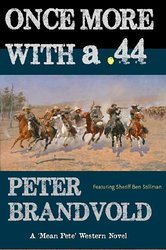 I mean, beyond the lies of the fiction I write. I would, however, argue fiction in general is a whole lot more honest than the fibs I tell daily – outside of my novels – just to amuse myself. When I’m writing my western tales, I feel truer than I ever feel in the real world – meaning the world outside of the world in my head. The world in my head is the one I bleed onto the computer screen eight to nine hours every day. It is the world that has kept me from getting a really good night’s sleep since I went through the somnambulism of adolescence. My characters are more me than I am. Does that makes sense? No, I’m not drunk. Yet. Getting back to the lie... Back in 1996, I sent my first western manuscript to a New York editor. He not-so-promptly rejected it, telling me westerns need to be really gritty these days. Good luck! So, being the good liar I am, I sent the book back to him saying, Okay, I grittied it up for ya! Or something similar.
I mean, beyond the lies of the fiction I write. I would, however, argue fiction in general is a whole lot more honest than the fibs I tell daily – outside of my novels – just to amuse myself. When I’m writing my western tales, I feel truer than I ever feel in the real world – meaning the world outside of the world in my head. The world in my head is the one I bleed onto the computer screen eight to nine hours every day. It is the world that has kept me from getting a really good night’s sleep since I went through the somnambulism of adolescence. My characters are more me than I am. Does that makes sense? No, I’m not drunk. Yet. Getting back to the lie... Back in 1996, I sent my first western manuscript to a New York editor. He not-so-promptly rejected it, telling me westerns need to be really gritty these days. Good luck! So, being the good liar I am, I sent the book back to him saying, Okay, I grittied it up for ya! Or something similar. 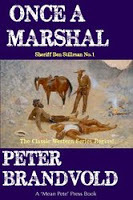 In truth, I didn’t change a word. I didn’t even run the thing through the printer again. I just sent the same manuscript back to the same editor. I might have even reused the same envelope he sent it back to me in. And it sold! Once A Marshal came out a year later. Obviously, the manuscript hadn’t been read the first time around. Which brings me to the thesis of this wandering discourse, which is about how much I hated having to answer to those corporate orangutans for a good fifteen years and nearly one hundred novels, and how much I love publishing my own westerns under my own pernicious imprint – Mean Pete Press.
In truth, I didn’t change a word. I didn’t even run the thing through the printer again. I just sent the same manuscript back to the same editor. I might have even reused the same envelope he sent it back to me in. And it sold! Once A Marshal came out a year later. Obviously, the manuscript hadn’t been read the first time around. Which brings me to the thesis of this wandering discourse, which is about how much I hated having to answer to those corporate orangutans for a good fifteen years and nearly one hundred novels, and how much I love publishing my own westerns under my own pernicious imprint – Mean Pete Press.
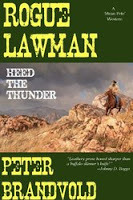 It’s true I owe New York something for giving me my start. But just a little. Unless you’re Stephen King, you really get treated like the mutt in the kennel of the New York book publishing industry – when you get treated like anything at all. Mostly, you get ignored, and treated with condescension. Generally, you’re treated like one of the fellas wearing the red shirts on Star Trek. For instance, they’ll ask you for input on the kind of book cover you want. Of course, they’ll want it right away because the editor forgot to ask you two weeks ago when she should have. And she’ll remind you in the tone of your first-grade teacher that if you don’t write the description you can’t complain about the cover which will end up slapped around your prose. So, since you’re the small fish who needs to please the big fish, you take a couple of hours off from the book you were hammering away on so busily. You proceed to busily write up a good description of the ideal cover that’s gonna make this book the biggest book of your whole career! You really work at it, and you nip it and tuck it, and you hit send. The you sit back with a big grin of a job-well-done on your mug. And when you get the proof back, the cover looks nothing like your description. It couldn’t look more different than a Van Gogh from a Kinkade!
It’s true I owe New York something for giving me my start. But just a little. Unless you’re Stephen King, you really get treated like the mutt in the kennel of the New York book publishing industry – when you get treated like anything at all. Mostly, you get ignored, and treated with condescension. Generally, you’re treated like one of the fellas wearing the red shirts on Star Trek. For instance, they’ll ask you for input on the kind of book cover you want. Of course, they’ll want it right away because the editor forgot to ask you two weeks ago when she should have. And she’ll remind you in the tone of your first-grade teacher that if you don’t write the description you can’t complain about the cover which will end up slapped around your prose. So, since you’re the small fish who needs to please the big fish, you take a couple of hours off from the book you were hammering away on so busily. You proceed to busily write up a good description of the ideal cover that’s gonna make this book the biggest book of your whole career! You really work at it, and you nip it and tuck it, and you hit send. The you sit back with a big grin of a job-well-done on your mug. And when you get the proof back, the cover looks nothing like your description. It couldn’t look more different than a Van Gogh from a Kinkade!
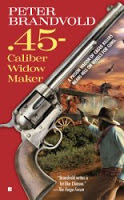 Turns out the editor forgot to bring to the meeting the description you so dutifully dropped everything to write,. As a result, the art department just went with what they had on the shelf. When you call your editor on it, she says something like, Gosh, I just got busy and it slipped my mind. Thanks so much for being so understanding, Peter. You’re a great team player. Cheers! In the New York publishing world, unless you’re James Patterson, you have no mouth and yet you must scream...
Turns out the editor forgot to bring to the meeting the description you so dutifully dropped everything to write,. As a result, the art department just went with what they had on the shelf. When you call your editor on it, she says something like, Gosh, I just got busy and it slipped my mind. Thanks so much for being so understanding, Peter. You’re a great team player. Cheers! In the New York publishing world, unless you’re James Patterson, you have no mouth and yet you must scream...
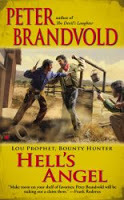 So, yeah, I’m glad to be out of the fringe of the New York publishing mainstream and hustling my own books myself on Amazon – and getting 70% of the cut from each sale rather than 8-10%. When I was writing for a long-running adult western series, I was getting a measly 6% of the sale of each mass-market paperback. When I found out I was getting only 6% of each e-book sale, as well, I went Johnny Paycheck. Like many other writers (at least the ones as stupid as me), I thought all publishers were obliged to pay their writers a minimum of 25% for each e-book sale. Wasn’t that the industry standard? Somehow, this publisher was able to scheme all the authors working on the series out of those earnings. The publisher claimed that since we were writing under a house name we were merely work for hire employees – even though I did nothing different in writing that adult series than I did in writing any of my other novels.
So, yeah, I’m glad to be out of the fringe of the New York publishing mainstream and hustling my own books myself on Amazon – and getting 70% of the cut from each sale rather than 8-10%. When I was writing for a long-running adult western series, I was getting a measly 6% of the sale of each mass-market paperback. When I found out I was getting only 6% of each e-book sale, as well, I went Johnny Paycheck. Like many other writers (at least the ones as stupid as me), I thought all publishers were obliged to pay their writers a minimum of 25% for each e-book sale. Wasn’t that the industry standard? Somehow, this publisher was able to scheme all the authors working on the series out of those earnings. The publisher claimed that since we were writing under a house name we were merely work for hire employees – even though I did nothing different in writing that adult series than I did in writing any of my other novels.
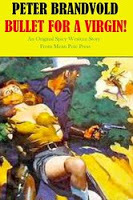 Soon after, the publishers canceled the series – not because I quit, but because they felt they weren’t making enough money on the adult westerns anymore despite dropping their advances to pennies and pisswater. However, every quarter I still receive royalties for nearly every series novel I wrote across ten years – even at 6% earnings! Even at 6% earnings on e-books! So, imagine what the publisher is still making on those books, since they’re getting 94%! Yet they didn’t think they were making enough to keep the books coming, despite the writers and readers who had come to love and depend on those yarns each month. In fact, they canceled all of their westerns. That’s New York for you. They have to make truckloads of money on something or they won’t publish it. They simply don’t care how many writers and readers are depending on the product. Nor do they care who they screw. Just one more (possibly two) knock(s) against New York…
Soon after, the publishers canceled the series – not because I quit, but because they felt they weren’t making enough money on the adult westerns anymore despite dropping their advances to pennies and pisswater. However, every quarter I still receive royalties for nearly every series novel I wrote across ten years – even at 6% earnings! Even at 6% earnings on e-books! So, imagine what the publisher is still making on those books, since they’re getting 94%! Yet they didn’t think they were making enough to keep the books coming, despite the writers and readers who had come to love and depend on those yarns each month. In fact, they canceled all of their westerns. That’s New York for you. They have to make truckloads of money on something or they won’t publish it. They simply don’t care how many writers and readers are depending on the product. Nor do they care who they screw. Just one more (possibly two) knock(s) against New York…
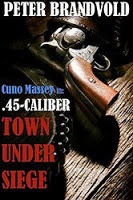 In all the years I wrote for them, I might have had one editor – and he was a real anomaly – who’d ever even read a western before he’d started editing them. Can you imagine putting an editor on a genre they’d never read before? And I dare say most of my editors had nothing but disdain for the western – the very genre they were editing! And I use the term editing loosely. Mostly, my editors changed what didn’t need to be changed, and totally dropped the ball on obvious mistakes. So, yeah, I’m very happy here in the very un-corporate offices of Mean Pete Press, in this little adobe house, in this quiet little town in western Minnesota. It’s just me and my dog, and no suits telling us what to do. Now, since I’m running off the leash, so to speak, I can come up with new series ideas at the drop of the Stetson. Instead of writing up a long, laborious proposal an editor may or may not skim, I just pour a cup of hot mud, pick up the laptop, and let my fingers dance the western rumba!
In all the years I wrote for them, I might have had one editor – and he was a real anomaly – who’d ever even read a western before he’d started editing them. Can you imagine putting an editor on a genre they’d never read before? And I dare say most of my editors had nothing but disdain for the western – the very genre they were editing! And I use the term editing loosely. Mostly, my editors changed what didn’t need to be changed, and totally dropped the ball on obvious mistakes. So, yeah, I’m very happy here in the very un-corporate offices of Mean Pete Press, in this little adobe house, in this quiet little town in western Minnesota. It’s just me and my dog, and no suits telling us what to do. Now, since I’m running off the leash, so to speak, I can come up with new series ideas at the drop of the Stetson. Instead of writing up a long, laborious proposal an editor may or may not skim, I just pour a cup of hot mud, pick up the laptop, and let my fingers dance the western rumba! 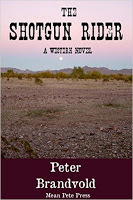 That’s what I did recently with my new western series – The Shotgun Rider. I just finished the second book, Two Smoking Barrels, which is up on Amazon, by the way. I’m very proud of that series. I think it’s turning out well because it’s new and fresh and I could spontaneously start writing it without having to jump through a bunch of corporate hoops.
That’s what I did recently with my new western series – The Shotgun Rider. I just finished the second book, Two Smoking Barrels, which is up on Amazon, by the way. I’m very proud of that series. I think it’s turning out well because it’s new and fresh and I could spontaneously start writing it without having to jump through a bunch of corporate hoops.
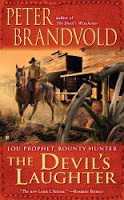 I write a book a month now and publish them myself on Amazon. Not because I need to write that much but because I LOVE to. I do my own editing and I make my own book covers. For the covers, I don’t use any elaborate software – mostly just Pageswhich came with my Macs. I might have spent $150, tops, on all the stock photos I’ve purchased from online sights. I like the challenge of doing things independently and on the cheap. The covers might look a little cheap, but I figure the stuff between those virtual pasteboards makes up for it. My name is well enough known in the western genre that readers know what they’ll be getting from me, despite the cover. In the meantime, I’m working on it. One of these days I might just spring for Photoshop. That’s another thing I love about self-publishing – all the opportunities to learn new stuff, to grow at my own time and my own pace, answering to only myself. Don’t fence me in!
I write a book a month now and publish them myself on Amazon. Not because I need to write that much but because I LOVE to. I do my own editing and I make my own book covers. For the covers, I don’t use any elaborate software – mostly just Pageswhich came with my Macs. I might have spent $150, tops, on all the stock photos I’ve purchased from online sights. I like the challenge of doing things independently and on the cheap. The covers might look a little cheap, but I figure the stuff between those virtual pasteboards makes up for it. My name is well enough known in the western genre that readers know what they’ll be getting from me, despite the cover. In the meantime, I’m working on it. One of these days I might just spring for Photoshop. That’s another thing I love about self-publishing – all the opportunities to learn new stuff, to grow at my own time and my own pace, answering to only myself. Don’t fence me in!
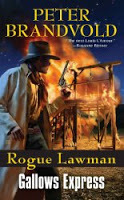 That said, I still like ink and paper. And since I know many readers still do, I publish one or two traditional paper books a year with Five Star, which is still a small enough company that they’re able to do terrific work, which they seem to love doing. They don’t suffer from the bureaucratic-like dysfunction of larger publishing companies. They’re good at publishing books, and, while their advances are low, they’re royalties are competitive. Like me, they know how to carve out their own niche and grow a market. In that way, they compliment my own self-publishing beautifully.
That said, I still like ink and paper. And since I know many readers still do, I publish one or two traditional paper books a year with Five Star, which is still a small enough company that they’re able to do terrific work, which they seem to love doing. They don’t suffer from the bureaucratic-like dysfunction of larger publishing companies. They’re good at publishing books, and, while their advances are low, they’re royalties are competitive. Like me, they know how to carve out their own niche and grow a market. In that way, they compliment my own self-publishing beautifully. I’m not making money hand over fist, but then I never was. But we here at Mean Pete Press – i.e., Mean Pete and his dog Syd – are devoted to writing the best damn westerns we can, and are having one hell of a good time running off our leashes while we do it. Hell, we don’t even wear collars! We may not be drinking champagne every night, but we are drinking the champagne of beers...
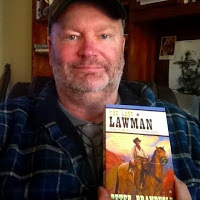 ABOUT PETER BRANDVOLD: Born and raised in North Dakota, Peter Brandvold has been writing westerns full time under his own name and his pen name, Frank Leslie, for 15 years. Before becoming a full time writer, he taught English on the Rocky Boy's Indian Reservation in northern Montana. He currently lives in northern Colorado where, in addition to traditional westerns, he writes paranormal westerns and screenplays.
AMAZON AUTHOR PAGE
WEBSITE
TWITTER
FACEBOOK
ABOUT PETER BRANDVOLD: Born and raised in North Dakota, Peter Brandvold has been writing westerns full time under his own name and his pen name, Frank Leslie, for 15 years. Before becoming a full time writer, he taught English on the Rocky Boy's Indian Reservation in northern Montana. He currently lives in northern Colorado where, in addition to traditional westerns, he writes paranormal westerns and screenplays.
AMAZON AUTHOR PAGE
WEBSITE
TWITTER
FACEBOOK
Published on August 28, 2015 09:18
August 27, 2015
OUTSIDE INFLUENCES
 OUTSIDE INFLUENCES TYLER DILTS / PAUL BISHOP Recently, my writer friend Tyler Dilts posted an attention grabbing comment on Facebook. In essence, Tyler had been asked what outside influences – other than literature – had been the most practical use to him as a fiction writer. His response contained four specific points… Acting taught me about character development, subtext, beats, and dialogue. Improvisation taught me how to be present in the moment of a scene and how to use that awareness to develop conflict and story. Standup Comedy taught me how to construct sentences, paragraphs, and scenes with setups and payoffs. Film editing taught me how to make meaning through juxtaposition and focus, and maybe most importantly, what you leave out is at least as important as what you put in.
OUTSIDE INFLUENCES TYLER DILTS / PAUL BISHOP Recently, my writer friend Tyler Dilts posted an attention grabbing comment on Facebook. In essence, Tyler had been asked what outside influences – other than literature – had been the most practical use to him as a fiction writer. His response contained four specific points… Acting taught me about character development, subtext, beats, and dialogue. Improvisation taught me how to be present in the moment of a scene and how to use that awareness to develop conflict and story. Standup Comedy taught me how to construct sentences, paragraphs, and scenes with setups and payoffs. Film editing taught me how to make meaning through juxtaposition and focus, and maybe most importantly, what you leave out is at least as important as what you put in.
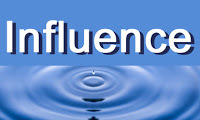 Tyler then put out a call asking what outside influences other writers found useful in creating fiction. The comebacks were many and varied. Below is an edited collection of the responses… People watching. I saw a man the other day at a fish market sitting at a table alone with a opened bottle of white wine , a untouched plate of food, his head in his hands, reading some novel off his phone. I just observed him and basically wrote him a backstory in my head and character traits. We're always writing. By observing the world around us and trying to make sense of it, we write. Music, for pacing, crescendo, rests, and several voices telling one story. Bartending (this one was a personal favorite) Pro Wrestling, which taught me the best bad guys have some truth on their side, no matter how despicable their actions might be. Drama. Learn how to visualize scenes and reveal character one pixel at a time using dialogue and behavior. Screenwriting. Not necessarily the three act structure, but understanding concepts like inciting incident, key incident, and plot points helps to shape characters. Also dramatic need – A character who doesn't want anything is just furniture. Journalism teaches you how to write a sentence economically. Have a career / work a job / do something other than write. Painting. Learning to recreate a visual scene teaches you to see the whole of an image and its constituent parts simultaneously. Farming teaches patience and diligence, along with how to accept the parts of creation outside of your control and effort. In psychoanalysis, everything is multi-layered and everyone has competing desires within them. Semiotics/Post-structuralism – individual words have cultural power. Yoga for balance and discipline. Yoga routines have a satisfying narrative flow Parenthood. Because humans are so strange. With knitting, everything is a composition, a medium arranged in a pattern. You can rip out stitches and start over. Nothing is perfect. Perfection is boring and for machines. Comic books teach imagery and writing from the gut. Plus, everyone wants be some kind of hero. Gardening. Because sometimes you have to dig through piles and piles of manure to get a flower. Studying martial arts and boxing have been great for writing fight scenes and understanding fear, anger and fight psychology. Listening. To everybody. Even the idiots. Blindness, which taught me how to engage the other senses more significantly in my work. History, because it teaches how seemingly insignificant events can contribute to life-altering consequences. Wine and perfume appreciation, which teach awareness of senses other than sight and hearing.
Tyler then put out a call asking what outside influences other writers found useful in creating fiction. The comebacks were many and varied. Below is an edited collection of the responses… People watching. I saw a man the other day at a fish market sitting at a table alone with a opened bottle of white wine , a untouched plate of food, his head in his hands, reading some novel off his phone. I just observed him and basically wrote him a backstory in my head and character traits. We're always writing. By observing the world around us and trying to make sense of it, we write. Music, for pacing, crescendo, rests, and several voices telling one story. Bartending (this one was a personal favorite) Pro Wrestling, which taught me the best bad guys have some truth on their side, no matter how despicable their actions might be. Drama. Learn how to visualize scenes and reveal character one pixel at a time using dialogue and behavior. Screenwriting. Not necessarily the three act structure, but understanding concepts like inciting incident, key incident, and plot points helps to shape characters. Also dramatic need – A character who doesn't want anything is just furniture. Journalism teaches you how to write a sentence economically. Have a career / work a job / do something other than write. Painting. Learning to recreate a visual scene teaches you to see the whole of an image and its constituent parts simultaneously. Farming teaches patience and diligence, along with how to accept the parts of creation outside of your control and effort. In psychoanalysis, everything is multi-layered and everyone has competing desires within them. Semiotics/Post-structuralism – individual words have cultural power. Yoga for balance and discipline. Yoga routines have a satisfying narrative flow Parenthood. Because humans are so strange. With knitting, everything is a composition, a medium arranged in a pattern. You can rip out stitches and start over. Nothing is perfect. Perfection is boring and for machines. Comic books teach imagery and writing from the gut. Plus, everyone wants be some kind of hero. Gardening. Because sometimes you have to dig through piles and piles of manure to get a flower. Studying martial arts and boxing have been great for writing fight scenes and understanding fear, anger and fight psychology. Listening. To everybody. Even the idiots. Blindness, which taught me how to engage the other senses more significantly in my work. History, because it teaches how seemingly insignificant events can contribute to life-altering consequences. Wine and perfume appreciation, which teach awareness of senses other than sight and hearing.
 Like the above comments, my own responses come from the influences in my life, all of which have influence my fiction… Police work, which taught me truth is a variable – life is full of gray areas. Also taking no action is the worst possible choice. Playing soccer taught me about narrative flow and strategy. It taught me how my characters had to be team players to succeed. Book collecting, which taught me about obsession, anguish, and pursuit – all parts of a good story. I’m sure there are many other outside influences that teach us things we can apply to the fictional worlds we create. What are yours?
Like the above comments, my own responses come from the influences in my life, all of which have influence my fiction… Police work, which taught me truth is a variable – life is full of gray areas. Also taking no action is the worst possible choice. Playing soccer taught me about narrative flow and strategy. It taught me how my characters had to be team players to succeed. Book collecting, which taught me about obsession, anguish, and pursuit – all parts of a good story. I’m sure there are many other outside influences that teach us things we can apply to the fictional worlds we create. What are yours?
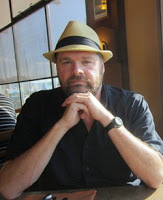 TYLER DILTS:As a child, Tyler Dilts dreamed of following in the footsteps of his policeman father. Though his career goals changed over time, he never lost interest in the daily work of homicide detectives. Today he teaches creative writing at California State University in Long Beach, and his writing has appeared in the Los Angeles Times, The Los Angeles Review of Books, The Best American Mystery Stories, and numerous other publications. He is the author of A King of Infinite Space and The Pain Scale, the first two novels in the Long Beach Homicide series. He lives with his wife in Long Beach, California.
AMAZON
FACEBOOK
TWITTER
TYLER DILTS:As a child, Tyler Dilts dreamed of following in the footsteps of his policeman father. Though his career goals changed over time, he never lost interest in the daily work of homicide detectives. Today he teaches creative writing at California State University in Long Beach, and his writing has appeared in the Los Angeles Times, The Los Angeles Review of Books, The Best American Mystery Stories, and numerous other publications. He is the author of A King of Infinite Space and The Pain Scale, the first two novels in the Long Beach Homicide series. He lives with his wife in Long Beach, California.
AMAZON
FACEBOOK
TWITTER
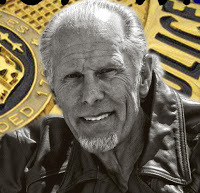 PAUL BISHOP: Novelist, screenwriter, and television personality, Paul Bishop spent 35 years with the Los Angeles Police Department, where he was twice honored as Detective of the Year. He continues to work privately as a deception expert. His fifteen novels include five in his LAPD Homicide Detective Fey Croaker series. His latest novel, Lie Catchers, begins a new series featuring top LAPD interrogators Ray Pagan and Calamity Jane Randall.
WWW.PAULBISHOPBOOKS.COM
TWITTER
FACEBOOK
AMAZON
PAUL BISHOP: Novelist, screenwriter, and television personality, Paul Bishop spent 35 years with the Los Angeles Police Department, where he was twice honored as Detective of the Year. He continues to work privately as a deception expert. His fifteen novels include five in his LAPD Homicide Detective Fey Croaker series. His latest novel, Lie Catchers, begins a new series featuring top LAPD interrogators Ray Pagan and Calamity Jane Randall.
WWW.PAULBISHOPBOOKS.COM
TWITTER
FACEBOOK
AMAZON
Published on August 27, 2015 10:24
August 26, 2015
LIE CATCHERS ~ COMING THIS WEEK
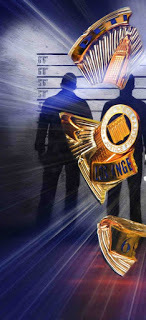 LIE CATCHERS Debuting this week from Pro Se Productions! Find out about the man behind the tale of the people in the field who ferret out the falsehoods in desperate and often dangerous pursuit of the truth!
LIE CATCHERS Debuting this week from Pro Se Productions! Find out about the man behind the tale of the people in the field who ferret out the falsehoods in desperate and often dangerous pursuit of the truth!Paul Bishop is the author of fourteen previous novels and creator of the popular Fight Card series of New Pulp novels. He starred in the ABC interrogation reality show Take the Money and Run, and was twice named LAPD Detective of the Year. He continues to work as an expert in deception detection. "Having read voraciously in the mystery field," says Bishop, "as well as writing a number of previous cop novels, I’d never come across anything dealing with interrogation in a realistic manner. Books don’t get it right. TV certainly doesn’t get it right – not even the real cop shows like 48 Hours. How my team of detectives and I interrogate suspects – not just the techniques, but the psychological and physical sciences behind them – had never been captured on the page. With my experience 'in the box,' I was in a unique position to write an interrogation based novel and make it as realistic as fiction would allow. Lie Catchers is the result." The Truth Is Coming. Paul Bishop's LIE CATCHERS debuts this week from Pro Se Productions. Cover by Jeffrey Hayes
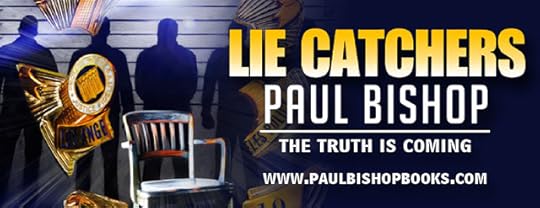
Published on August 26, 2015 14:03
ANOTHER VIEW ON SELF-PUBLISHING
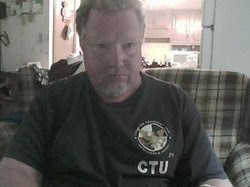 Recently independent authors Brian Drake (CLICK HERE and CLICK HERE) and Percival Constantine (CLICK HERE) provided guest posts on the costs and rewards of self-publishing. These generated a lot of interest, so I asked the prolific Bill Craig to share his self-publishing journey. Bill is extremely prolific, which helps him make a living as a full time writer. However, as you will see, it took a lot of hard work and persistence on his part to achieve be able to quit his day job and become a full time writer…
Recently independent authors Brian Drake (CLICK HERE and CLICK HERE) and Percival Constantine (CLICK HERE) provided guest posts on the costs and rewards of self-publishing. These generated a lot of interest, so I asked the prolific Bill Craig to share his self-publishing journey. Bill is extremely prolific, which helps him make a living as a full time writer. However, as you will see, it took a lot of hard work and persistence on his part to achieve be able to quit his day job and become a full time writer…A SUCCESSFUL AUTHOR’S VIEWSON SELF-PUBLISHINGBILL CRAIG
I have been writing since I was six years old. I worked on polishing my writing for 34 years, and I still continue polishing it to this day. However, I did publish my first novel, Valley of Death, in 2000. Print On Demand publishing was still in its infancy back then. The original edition of Valley of Deathwas published by a company called xlibris. I still have that on my book shelf. It was the first book to star my action adventure character Jack Riley.
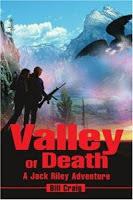 Once it was off to the publisher, I started writing Mayan Gold, though I started writing that book under the working title of Mexican Stand-off. It was the second book to feature Jack Riley and his partner Ken Alston. It was published first through iUniverse and I was so blown away by their cover that I moved Valley of Death over to them. Now at the time, xlibris and iUniverse were considered vanity presses because the author paid a fee. Sure you could buy them on BarnesandNoble.com and Amazon.com, but they wouldn’t carry them in the stores.
Once it was off to the publisher, I started writing Mayan Gold, though I started writing that book under the working title of Mexican Stand-off. It was the second book to feature Jack Riley and his partner Ken Alston. It was published first through iUniverse and I was so blown away by their cover that I moved Valley of Death over to them. Now at the time, xlibris and iUniverse were considered vanity presses because the author paid a fee. Sure you could buy them on BarnesandNoble.com and Amazon.com, but they wouldn’t carry them in the stores.
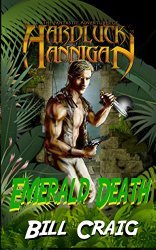 The third book in the series was published through a POD company that was actually run through Amazon with a lower price. I don’t remember the name. I jumped ship and published the next two books through Publish America. It didn’t take long for me to realize that PA really was a vanity press because they would publish without charging, but then wanted the author to pay extensive fees to get copies, buy marketing packages, and a number of other things designed to drain the author dry. Then while looking through a copy of The Writer, I discovered two new publishers. Lulu.com and Createspace.com. I was trying to expand out of action adventure at the time and had written the first Decker P.I. book, Scorpion Cay. I bought a cover from a cheap service and published it originally through Lulu.com/ About that time, along with Sean Ellis and a few others who belonged to my now defunct Yahoo writers group, we discussed creating a whole new pulp universe of characters and Age of Adventuremagazine was born. I really didn’t make much from them, but it was through that effort Hardluck Hannigan came into being. Emerald Death and The Sky Masters were originally produced as e-books through Lost Continent Library and publisher Walter Bosley. My character, Paul Sabre, came to life in Lost Continent Library E-Zine.
The third book in the series was published through a POD company that was actually run through Amazon with a lower price. I don’t remember the name. I jumped ship and published the next two books through Publish America. It didn’t take long for me to realize that PA really was a vanity press because they would publish without charging, but then wanted the author to pay extensive fees to get copies, buy marketing packages, and a number of other things designed to drain the author dry. Then while looking through a copy of The Writer, I discovered two new publishers. Lulu.com and Createspace.com. I was trying to expand out of action adventure at the time and had written the first Decker P.I. book, Scorpion Cay. I bought a cover from a cheap service and published it originally through Lulu.com/ About that time, along with Sean Ellis and a few others who belonged to my now defunct Yahoo writers group, we discussed creating a whole new pulp universe of characters and Age of Adventuremagazine was born. I really didn’t make much from them, but it was through that effort Hardluck Hannigan came into being. Emerald Death and The Sky Masters were originally produced as e-books through Lost Continent Library and publisher Walter Bosley. My character, Paul Sabre, came to life in Lost Continent Library E-Zine.
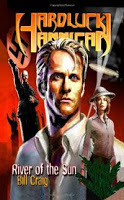 By this time I was going through a really nasty divorce and wrote the first of my mysteries featuring Police Detective Joe Collins titled The Butterfly Tattoo, followed by Paradise Lost. The Butterfly Tattoo began to sell well on Amazon as both a Kindle e-book and as a POD title through CreateSpace. My Decker P.I. books had also started selling well. I was making money doing something I loved, but still had to work a day job. I was also taking care of an aging and ailing father and raising an energetic young son of whom I gotten after the divorce. The Decker books were looking good with fantastic covers by Colorado artist Laura Givens. The covers were eye-catching and made people give the title a look. The same with the covers she was doing for the Hardluck Hannigan books. Did I mention I write a lot? Anyway, I reconnected with an old friend named Mark Howell who was formerly a managing editor at Gold Eagle Books. He was then working for the Key West Citizen. Mark introduced my writing to Shirrel Rhoades, the publisher of Absolutely Amazing E-Books in Key West. Shirrel took over publication of the first two Joe Collins books. About that time, my father’s health took a turn for the worse and he went into the nursing home for the first time.
By this time I was going through a really nasty divorce and wrote the first of my mysteries featuring Police Detective Joe Collins titled The Butterfly Tattoo, followed by Paradise Lost. The Butterfly Tattoo began to sell well on Amazon as both a Kindle e-book and as a POD title through CreateSpace. My Decker P.I. books had also started selling well. I was making money doing something I loved, but still had to work a day job. I was also taking care of an aging and ailing father and raising an energetic young son of whom I gotten after the divorce. The Decker books were looking good with fantastic covers by Colorado artist Laura Givens. The covers were eye-catching and made people give the title a look. The same with the covers she was doing for the Hardluck Hannigan books. Did I mention I write a lot? Anyway, I reconnected with an old friend named Mark Howell who was formerly a managing editor at Gold Eagle Books. He was then working for the Key West Citizen. Mark introduced my writing to Shirrel Rhoades, the publisher of Absolutely Amazing E-Books in Key West. Shirrel took over publication of the first two Joe Collins books. About that time, my father’s health took a turn for the worse and he went into the nursing home for the first time.
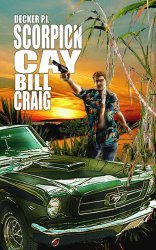 In the month that followed, I wrote Marlow: Indigo Tide, the first of my Key West mysteries featuring Rick Marlow, a former NYPD cop shot in the line of duty by his partner right after finding the dead body of an undercover Narcotics officer. Here was a character I could really sink my teeth into. He had flaws. He smoked too much, drank too much, was fighting post-traumatic stress syndrome and had lost half a lung from the wounds he had suffered. Indigo Tide went on to become my first Amazon.com best seller, breaking into the top 100 in the hard-boiled mystery category. I was starting to move away from the pulp adventure genre and devoting more time to my mystery writing. As I got older, mysteries had more of an appeal to me. I’ve always enjoyed puzzles, plus I could say I killed people for a living when people ask what I do. I usually make it clear I only do it in fiction. As I look back at the past fifteen years. I realize how much how much I’ve change as a person and how much my writing has changed along with me. I like to think I have grown as a writer as well as a human being. All six of my Marlow Key West mysteries have gone into the top 100 on Amazon along with two Decker P.I. titles. Since Dad passed away last year, I write full time and I am an active full time parent.
In the month that followed, I wrote Marlow: Indigo Tide, the first of my Key West mysteries featuring Rick Marlow, a former NYPD cop shot in the line of duty by his partner right after finding the dead body of an undercover Narcotics officer. Here was a character I could really sink my teeth into. He had flaws. He smoked too much, drank too much, was fighting post-traumatic stress syndrome and had lost half a lung from the wounds he had suffered. Indigo Tide went on to become my first Amazon.com best seller, breaking into the top 100 in the hard-boiled mystery category. I was starting to move away from the pulp adventure genre and devoting more time to my mystery writing. As I got older, mysteries had more of an appeal to me. I’ve always enjoyed puzzles, plus I could say I killed people for a living when people ask what I do. I usually make it clear I only do it in fiction. As I look back at the past fifteen years. I realize how much how much I’ve change as a person and how much my writing has changed along with me. I like to think I have grown as a writer as well as a human being. All six of my Marlow Key West mysteries have gone into the top 100 on Amazon along with two Decker P.I. titles. Since Dad passed away last year, I write full time and I am an active full time parent.
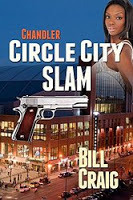 Last year, I set a goal for myself to publish a novel a month. This included a visit to Key West for the inaugural Key West Mystery Writers Weekend. I was working on my 5thKey Westmystery before I ever set foot on the island. I not only met my goal, but surpassed it, churning out 21 titles in twelve months. I am currently writing three mystery series, Marlow, Decker P.I., and the new Chandler Circle City Mysteries. I’m also working on projects in both the science fiction and western genres. I told myself I was going to slow down this year, but I just published my 8th title for 2015, with twelve for the year a strong possibility.
Last year, I set a goal for myself to publish a novel a month. This included a visit to Key West for the inaugural Key West Mystery Writers Weekend. I was working on my 5thKey Westmystery before I ever set foot on the island. I not only met my goal, but surpassed it, churning out 21 titles in twelve months. I am currently writing three mystery series, Marlow, Decker P.I., and the new Chandler Circle City Mysteries. I’m also working on projects in both the science fiction and western genres. I told myself I was going to slow down this year, but I just published my 8th title for 2015, with twelve for the year a strong possibility.
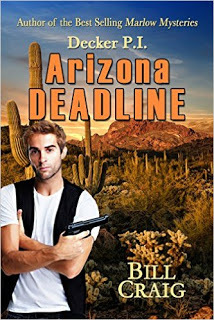 Arizona Deadline is my 10th title in the Decker P.I. series – my 56thbook since 2000. I have just started the first couple of chapters for the 7thMarlow book, tentatively titled Dark Waters. I am also working on the first book in a new series set in San Diego titled One More Way to Die. It features an ex-Naval Intelligence agent turned private eye. Plot possibilities for that series are endless. When people ask me how I do it, my only answer is I write. I write every day. I make enough money to live on without having to hold down an outside job, but I am always trying to put out new content and give readers something to enjoy. My two mentors over the years taught me a lot. Don Pendleton taught me to not be afraid to break the rules and to let the characters tell the story. Jerry Ahern taught me to show what’s happening and to have the manuscripts as camera-ready (an obsolete term in this digital age) before it goes to press. However, I measure my success by the fact readers keep buying my books.
Arizona Deadline is my 10th title in the Decker P.I. series – my 56thbook since 2000. I have just started the first couple of chapters for the 7thMarlow book, tentatively titled Dark Waters. I am also working on the first book in a new series set in San Diego titled One More Way to Die. It features an ex-Naval Intelligence agent turned private eye. Plot possibilities for that series are endless. When people ask me how I do it, my only answer is I write. I write every day. I make enough money to live on without having to hold down an outside job, but I am always trying to put out new content and give readers something to enjoy. My two mentors over the years taught me a lot. Don Pendleton taught me to not be afraid to break the rules and to let the characters tell the story. Jerry Ahern taught me to show what’s happening and to have the manuscripts as camera-ready (an obsolete term in this digital age) before it goes to press. However, I measure my success by the fact readers keep buying my books.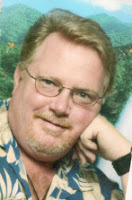 ABOUT THE AUTHOR: I taught myself to read when I was four-years-old and started writing my own stories at age six. I kept working to improve, doing some newspaper reporting along the way. I finally published my first novel at age forty, so it only took me thirty-four years to become an overnight success. Now fifty five books later, I am still going strong, my writing continues to improve, and the stories keep getting better. ON THE WEB
AMAZON
FACEBOOK
DECKER P.I. ~ ARIZONA DEADLINE
ABOUT THE AUTHOR: I taught myself to read when I was four-years-old and started writing my own stories at age six. I kept working to improve, doing some newspaper reporting along the way. I finally published my first novel at age forty, so it only took me thirty-four years to become an overnight success. Now fifty five books later, I am still going strong, my writing continues to improve, and the stories keep getting better. ON THE WEB
AMAZON
FACEBOOK
DECKER P.I. ~ ARIZONA DEADLINE
Published on August 26, 2015 13:50
August 25, 2015
WRITING FOR STRONG FEMALE CHARACTERS
 WRITING FOR STRONG FEMALE CHARACTERSPAUL BISHOP
WRITING FOR STRONG FEMALE CHARACTERSPAUL BISHOPWhen I created the character of LAPD Homicide Detective Fey Croaker, I knew a number of things about her. I knew she was hell-on-wheels as a detective, but consistently made bad choices in her personal life – including three ex-husbands (a cowboy, a cop, and a clergyman – the last being the worst choice of all). I knew she was going to be a strong, if not dominant, personality. She had to be a cut above tough in order to handle the five book muck-storm I was planning on throwing her way.
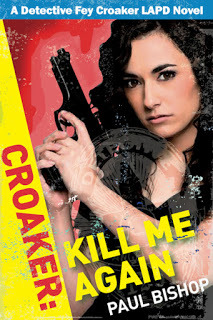 After some of the female LAPD detectives and officers read the Fey Croaker books, I was pleased when they asked me, “How do you know this stuff?” They were referring to the stuffFey endured in the books which revealed the struggles women in law enforcement face every day. This was stuff their male counterparts never had to deal with – and there’s a bunch of it. Their comments to me exposed just how rare it was for them to find a male colleague who understood these challenges. I have been lucky. Most of my long term partners on the LAPD have been amazing detectives who just happened to be female. The writer side of me has been paying attention for a long time to how women on the job have to handle or put up with all manner of things male cops don’t encounter. Those challenges forced successful female officers and detectives to work harder and smarter to not only do their job, but to also compete for promotions and assignments within the male dominated cop culture.
After some of the female LAPD detectives and officers read the Fey Croaker books, I was pleased when they asked me, “How do you know this stuff?” They were referring to the stuffFey endured in the books which revealed the struggles women in law enforcement face every day. This was stuff their male counterparts never had to deal with – and there’s a bunch of it. Their comments to me exposed just how rare it was for them to find a male colleague who understood these challenges. I have been lucky. Most of my long term partners on the LAPD have been amazing detectives who just happened to be female. The writer side of me has been paying attention for a long time to how women on the job have to handle or put up with all manner of things male cops don’t encounter. Those challenges forced successful female officers and detectives to work harder and smarter to not only do their job, but to also compete for promotions and assignments within the male dominated cop culture.
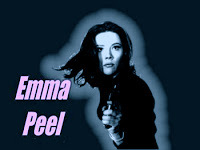 I’ve watched closely and made note of the ways female officers responded in these situations. These were the traits and techniques I was able to tap into when bringing Fey Croaker to life on the page. From the responses of female cop readers, it was satisfying to know they felt Fey was truly part of the Sisterhood of Blue. My latest novel, Lie Catchers, features two top LAPD interrogators, Ray Pagan and Calamity Jane Randall. Whereas the Fey Croaker books were told in the third person, Lie Catchers needed to be told in the first person because of the intense intimacy between characters and readers the story demanded.
I’ve watched closely and made note of the ways female officers responded in these situations. These were the traits and techniques I was able to tap into when bringing Fey Croaker to life on the page. From the responses of female cop readers, it was satisfying to know they felt Fey was truly part of the Sisterhood of Blue. My latest novel, Lie Catchers, features two top LAPD interrogators, Ray Pagan and Calamity Jane Randall. Whereas the Fey Croaker books were told in the third person, Lie Catchers needed to be told in the first person because of the intense intimacy between characters and readers the story demanded.
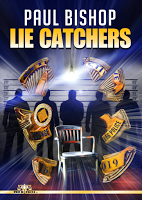 Telling the story from Ray Pagan’s perspective just didn’t feel right. One of Pagan’s qualities is the unusual ways in which he approaches situations. This was best experienced from the point of view of another character who would come to understand Pagan along with the reader. That put me, as the writer, inside the head of CalamityJane Randall – a very good detective, but still a woman who doesn’t truly understand herself. To become a great detective, a great interrogator, she needs Pagan to lead her on the path to self-discovery. He also needs her to save him from himself. I didn’t want Pagan and Randall to be a riff on Holmes and Watson. I wanted the Pagan/Randall dynamic to be a symbiotic, equal partnership. Randall wasn’t just there to assist and marvel at Pagan’s brilliance – a foil used to listen while Pagan explained his cleverness. Randall is her own woman with her own strengths. Yes, sometimes Pagan acts as a mentor, but I wanted there to be an equal number of times when Randall’s actions saved the day. Jane needed to be a leader, not always a follower. But here was the challenge. As a male, writing in the third person about a female main character like Fey Croaker was one thing. Actually getting inside Jane Randall’s head to tell the story from her perspective as a woman was entirely another.
Telling the story from Ray Pagan’s perspective just didn’t feel right. One of Pagan’s qualities is the unusual ways in which he approaches situations. This was best experienced from the point of view of another character who would come to understand Pagan along with the reader. That put me, as the writer, inside the head of CalamityJane Randall – a very good detective, but still a woman who doesn’t truly understand herself. To become a great detective, a great interrogator, she needs Pagan to lead her on the path to self-discovery. He also needs her to save him from himself. I didn’t want Pagan and Randall to be a riff on Holmes and Watson. I wanted the Pagan/Randall dynamic to be a symbiotic, equal partnership. Randall wasn’t just there to assist and marvel at Pagan’s brilliance – a foil used to listen while Pagan explained his cleverness. Randall is her own woman with her own strengths. Yes, sometimes Pagan acts as a mentor, but I wanted there to be an equal number of times when Randall’s actions saved the day. Jane needed to be a leader, not always a follower. But here was the challenge. As a male, writing in the third person about a female main character like Fey Croaker was one thing. Actually getting inside Jane Randall’s head to tell the story from her perspective as a woman was entirely another.I didn’t want to simply depend on the Bechdel Test, which bluntly states in order for a story to qualify as having strong female characters, it has to feature a plot with three specific points: 1) It must have at least two women in it, who 2) talk to each other, about 3) something other than a man. In my head, Jane Randall was already way beyond such basic notions
I had been living with the characters of Pagan and Randall in my brain for quite a while before I started writing Lie Catchers. As I prepared to start tapping out words, I found I actually knew more about Jane than I did about Pagan. I knew she was very different to Fey Croaker. The LAPD of 2015 was much different than Fey’s LAPD of the 1980s. Women were now fully integrated into the department from the street to the rarefied air of top administration. The last bastion of male dominance, SWAT, was on the verge of being rightfully invaded. All of this made Jane’s experiences on the job much different than Fey’s.
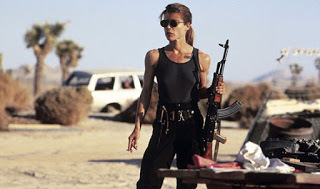 However, it wasn’t just the changes in the department separating Jane from Fey. Jane’s personality was very different. She was a touch more tentative, a little less self-aware. She was no less of a detective, but her approach was much more stealthy. Fey reacted, charging into situations until she crushed them. Jane had no problem taking physical action, but she quickly assessed situations and smoothly responded in whatever way would achieve her goal with a minimum of shattered glass. This was the biggest difference between the two characters – and that difference is what gave Jane the ability to become a skillful interrogator. Interrogation is all about becoming the person the suspect needs you to be in order to confess. You can’t do that by reacting…You have to be able to respond. When a doctor gives you a prescription and you reactto the drug, that’s bad. If you respondto the drug, that’s good.
However, it wasn’t just the changes in the department separating Jane from Fey. Jane’s personality was very different. She was a touch more tentative, a little less self-aware. She was no less of a detective, but her approach was much more stealthy. Fey reacted, charging into situations until she crushed them. Jane had no problem taking physical action, but she quickly assessed situations and smoothly responded in whatever way would achieve her goal with a minimum of shattered glass. This was the biggest difference between the two characters – and that difference is what gave Jane the ability to become a skillful interrogator. Interrogation is all about becoming the person the suspect needs you to be in order to confess. You can’t do that by reacting…You have to be able to respond. When a doctor gives you a prescription and you reactto the drug, that’s bad. If you respondto the drug, that’s good.
 Fay Croaker. Calamity Jane Randall. Two very strong female characters, yet quite unalike. As a writer, however, I needed to probe what these two characters had in common. What were the shared traits that made them strong females? Nobody will argue men and women communicate differently. Who buys all the self-help books on communication? Women. Who do they buy them for? Men. At the basic level, when men talk they report– I did this, I saw that. When women talk they rapport – I feel this way, I understand what you’re going through. While women on the job have been found to take on more male characteristics, because of the nature of the work, they still communicate on a different wavelength than men. All of this has to be taken into consideration when creating a strong female character who is actually female.
Fay Croaker. Calamity Jane Randall. Two very strong female characters, yet quite unalike. As a writer, however, I needed to probe what these two characters had in common. What were the shared traits that made them strong females? Nobody will argue men and women communicate differently. Who buys all the self-help books on communication? Women. Who do they buy them for? Men. At the basic level, when men talk they report– I did this, I saw that. When women talk they rapport – I feel this way, I understand what you’re going through. While women on the job have been found to take on more male characteristics, because of the nature of the work, they still communicate on a different wavelength than men. All of this has to be taken into consideration when creating a strong female character who is actually female.
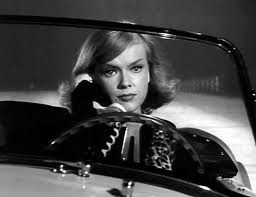 You cannot create male characters and then simply switch their genders and expect to have a fully rounded female character on the page. Women’s internal dialogue is different, their thought process often zigs when a man’s zags. Again this isn’t necessarily good or bad, but it is definitely different. If you don’t address that difference, your female characters will be flat or at best two dimensional. Neither Fey nor Jane are simply male characters with bigger breasts. Neither are they male fantasy figures with no depth. Their priorities and outlooks are uniquely female. They handled situations differently than their male counterparts – again, not always better, but different. I had to pay attention not to let either character fall into the bitch trap – having them behave in the shrill, grating, manner of an unreasonable harpy. I needed them to be able to show their strength in their behavior toward other female characters without clashing. Women talk to each other, often understanding each other on an empathic level to which most men are blind – proving the Bechdel Test has some validity. Strong female characters are a catalyst upon which the plot depends. Both Fey and Jane are strong enough to make decisions with a direct impact on the story. Neither simply wait around on the page for other characters to make things happen. Fey is definitely no tag-along. Jane while initially swept up and unbalanced in Pagan’s world, quickly finds her feet and takes initiative back into her own hands. These traits are part of their personalities – their character DNA.
You cannot create male characters and then simply switch their genders and expect to have a fully rounded female character on the page. Women’s internal dialogue is different, their thought process often zigs when a man’s zags. Again this isn’t necessarily good or bad, but it is definitely different. If you don’t address that difference, your female characters will be flat or at best two dimensional. Neither Fey nor Jane are simply male characters with bigger breasts. Neither are they male fantasy figures with no depth. Their priorities and outlooks are uniquely female. They handled situations differently than their male counterparts – again, not always better, but different. I had to pay attention not to let either character fall into the bitch trap – having them behave in the shrill, grating, manner of an unreasonable harpy. I needed them to be able to show their strength in their behavior toward other female characters without clashing. Women talk to each other, often understanding each other on an empathic level to which most men are blind – proving the Bechdel Test has some validity. Strong female characters are a catalyst upon which the plot depends. Both Fey and Jane are strong enough to make decisions with a direct impact on the story. Neither simply wait around on the page for other characters to make things happen. Fey is definitely no tag-along. Jane while initially swept up and unbalanced in Pagan’s world, quickly finds her feet and takes initiative back into her own hands. These traits are part of their personalities – their character DNA.
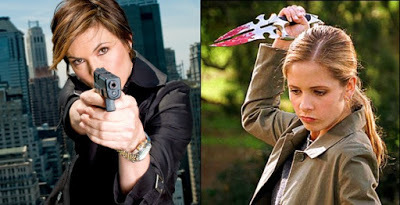 As I wrote both of these characters – quite a few years apart – I felt an obligation to maintain their female integrity. I need to protect them from falling into the clichés so often placed on female characters created by male authors. By doing so, both Fey and Jane covered my back by coming alive on the page and talking to me as I put them through the story’s paces. Pay attention to the details of your female characters. Let them live and breathe as females – not male clones. Use the differences to give depth to your female characters, and they will reward you by making your male characters stronger and better. Remember, This is a man’s world, but it ain’t nothin’ without a woman.
As I wrote both of these characters – quite a few years apart – I felt an obligation to maintain their female integrity. I need to protect them from falling into the clichés so often placed on female characters created by male authors. By doing so, both Fey and Jane covered my back by coming alive on the page and talking to me as I put them through the story’s paces. Pay attention to the details of your female characters. Let them live and breathe as females – not male clones. Use the differences to give depth to your female characters, and they will reward you by making your male characters stronger and better. Remember, This is a man’s world, but it ain’t nothin’ without a woman.ABOUT THE AUTHOR: Novelist, screenwriter, and television personality, Paul Bishop spent 35 years with the Los Angeles Police Department, where he was twice honored as Detective of the Year. He continues to work privately as a deception expert. His fifteen novels include five in his LAPD Homicide Detective Fey Croaker series. His latest novel, Lie Catchers, begins a new series featuring top LAPD interrogators Ray Pagan and Calamity Jane Randall. www.paulbishopbooks.com , Twitter @bishsbeat , Facebook , Amazon
Published on August 25, 2015 21:36

